Decluttering checklist – 34 things you can clear out right now
Tackle these clutter hotspots and you’ll notice the difference straightaway
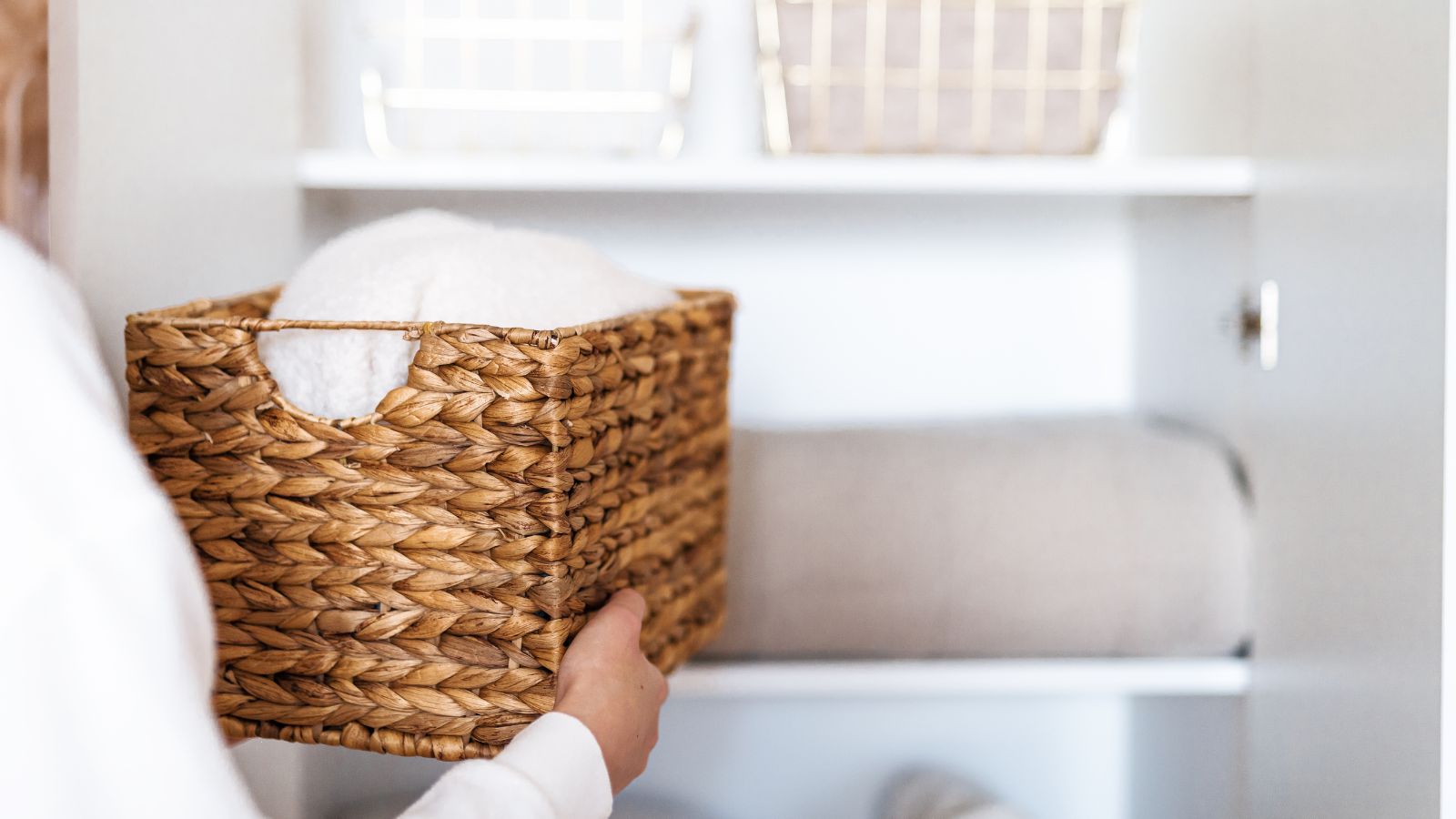
There’s no doubt that decluttering can be daunting, especially if you don’t know where to start. Rest assured, there are steps you can take to make the whole process easier, starting with a decluttering checklist.
While every home is different, there are some common hot spots that are particularly prone to clutter.
Knowing what these are – and employing effective decluttering tips – can make a huge difference. Not just to how neat and tidy your home looks, but to your motivation levels, too. With the help of our panel of organizing and home experts, we’ve created this ultimate decluttering checklist, organized by room, to make the job easier.
The ultimate decluttering checklist
Kitchens
1. Single use tools
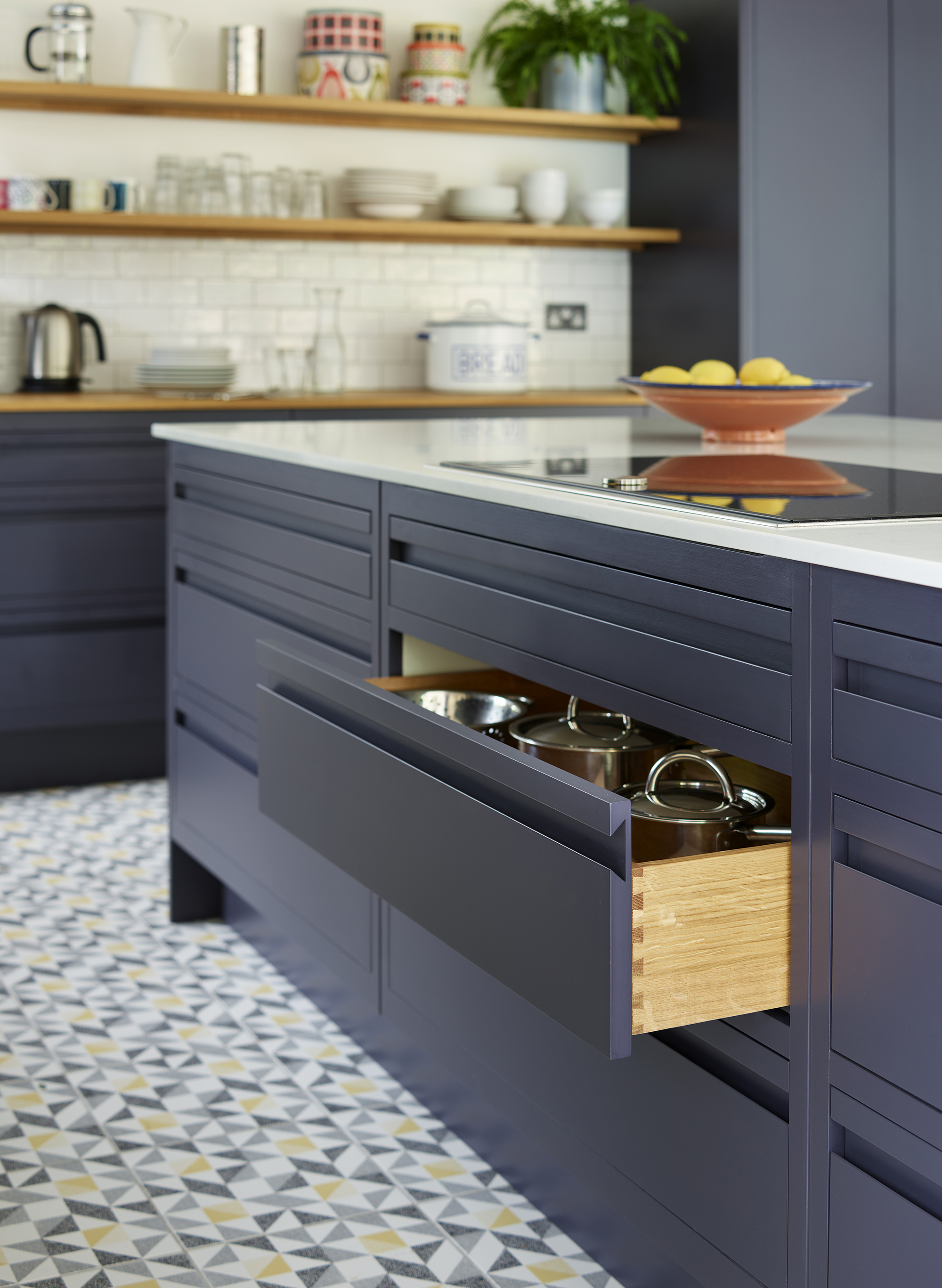
At the top of your kitchen decluttering checklist should be single-purpose tools that seemed fun in the store, but are collecting dust in your home.
From egg slicers and bagel cutters to novelty cookie cutters, we’re all guilty of hoarding single-purpose kitchen ‘tools’ in the hope they might one day be helpful. In reality, they’re used once or twice, then wind up as clutter.
Don’t fall subject to strong marketing – kitchen staples like a good set of sharp knives, sturdy wooden cutting boards, and wooden kitchen utensils, along with some multi-tasking tools, such as this OXO multipurpose scraper and chopper, at Amazon are the way forward if you want to keep kitchen clutter at bay.
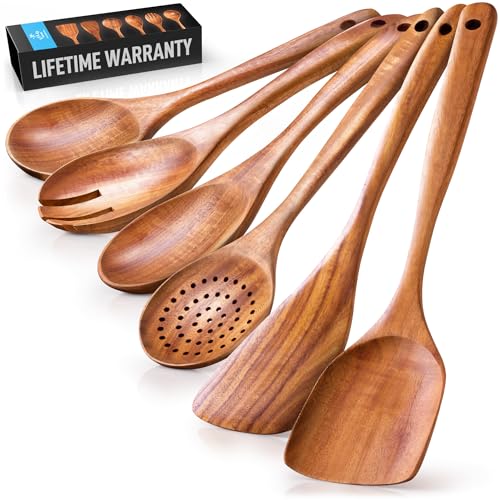
Wooden utensils do not leech chemicals into your food when heated or scratch non-stick pans, limiting your exposure to dangerous chemicals when cooking.
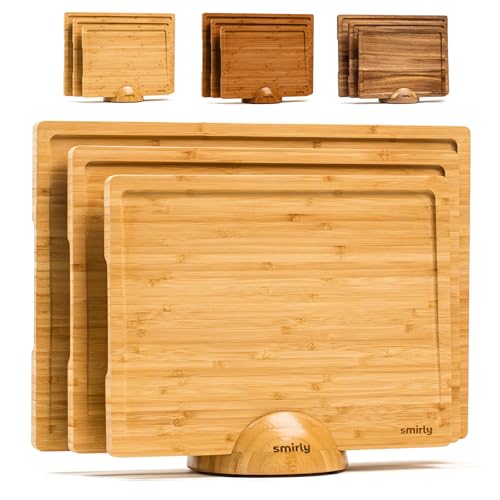
Buying a set of three cutting boards means you can designate one for vegetables, another for meat, and one for miscellaneous kitchen work to limit food contamination.
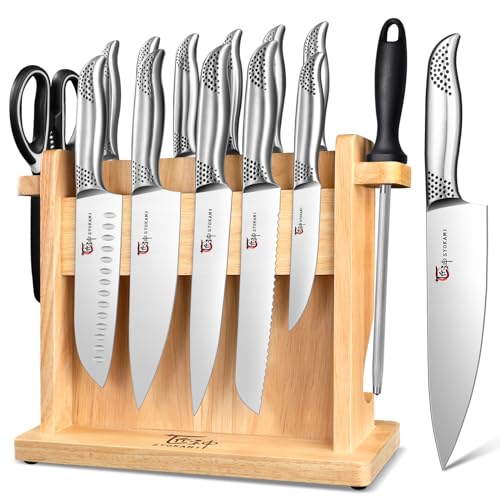
When buying a knife set, avoid enclosed knife blocks. These holders harbor bacteria in the grooves that are difficult to clean. A magnetic holder like this one is more hygienic and keeps your knives sharp.
2. Duplicate tools
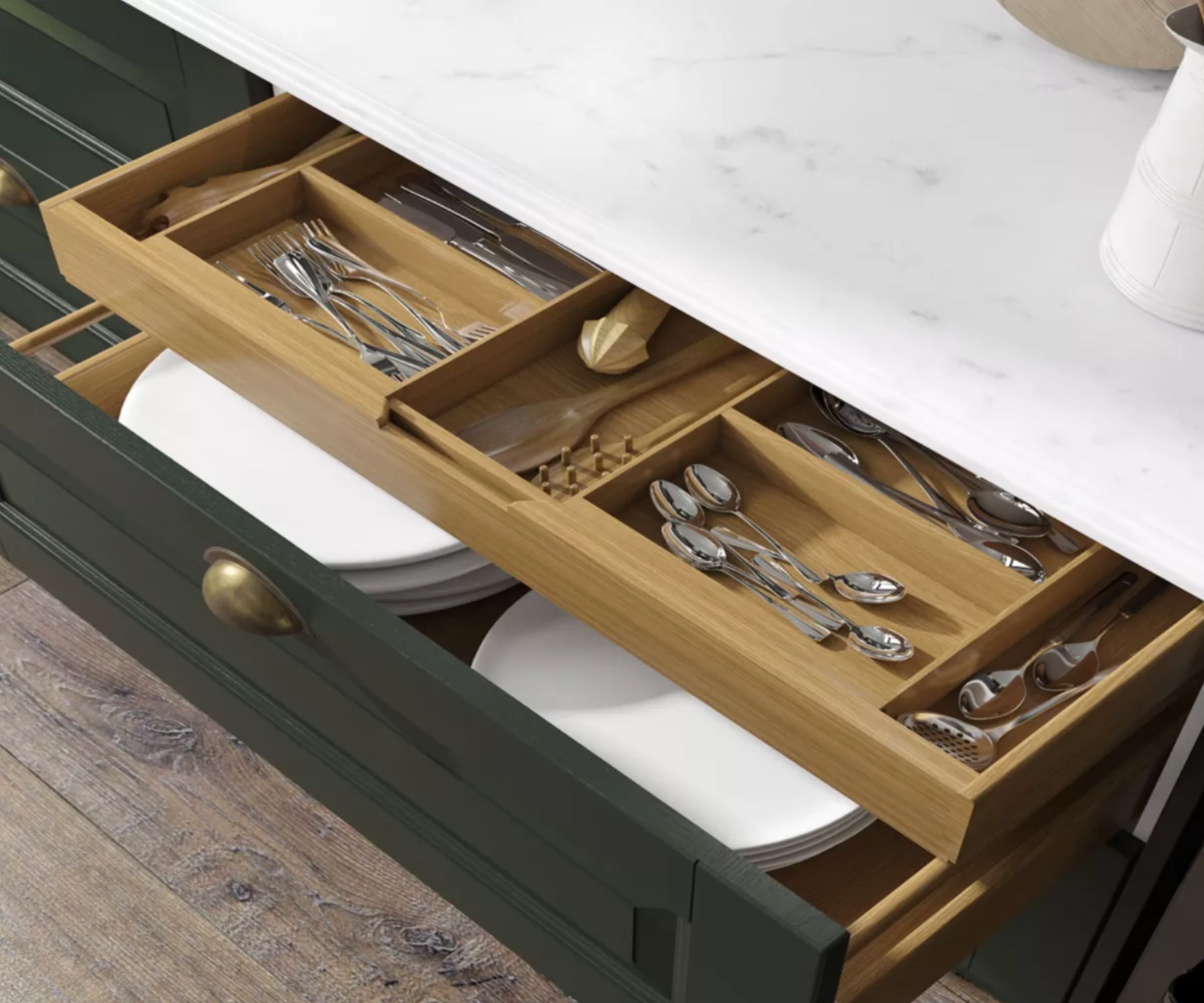
Of all the things to never keep duplicates of in your home, kitchen tools are among the most important. Kitchens need to be streamlined to be functional, and these duplicates are only making it harder for you to work.
Elizabeth Lulu Miranda, professional organizer and owner of Mercury Organizing explains, 'Buying duplicates because you can’t find an item buried in clutter is frustrating and wasteful. Having a visual inventory of what you own prevents these unnecessary purchases, therefore saving you money and reducing waste.'
While some serve a purpose (mugs, storage containers, cutting boards, etc), others do not. How many spatulas do you use at one time? We’re going to guess one. Veg peelers? Graters? Garlic presses?
We’ve made our point. Apply the ‘no duplicates’ rule, and you’ll see progress fast.
3. Expired food
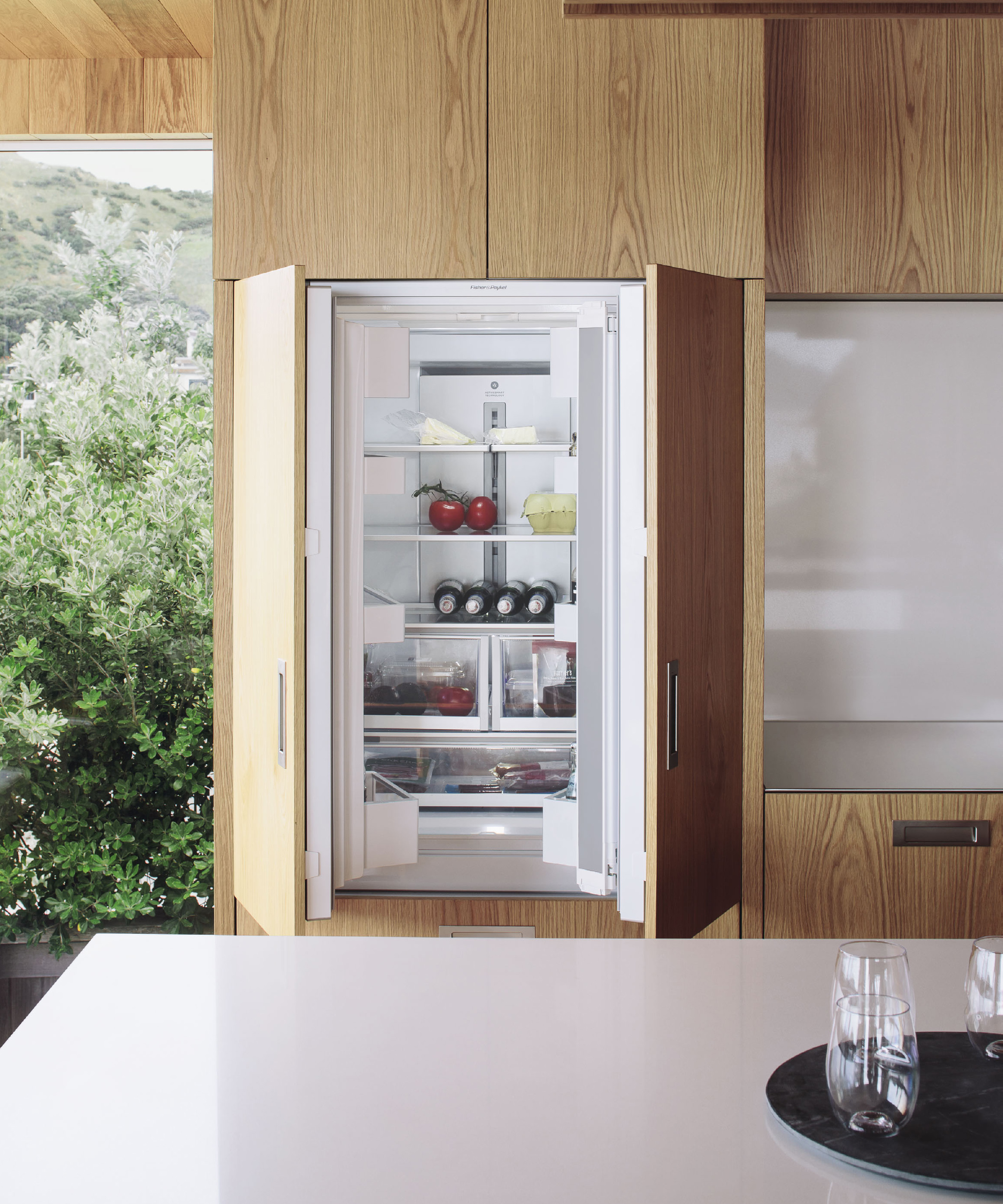
When decluttering a pantry or decluttering a fridge, the use-by dates will do the hard work for you.
Search through your pantry staples and refrigerator for expired or unwanted items, and make decisions on what needs to go and what could be donated to free up space.
Avoid playing ‘leftover roulette’ and get rid of anything without a clear label, remembering to brush up on some food storage ideas such as using a label maker from Walmart, for your next batch of leftovers to avoid food waste in the future.
4. Plastic containers
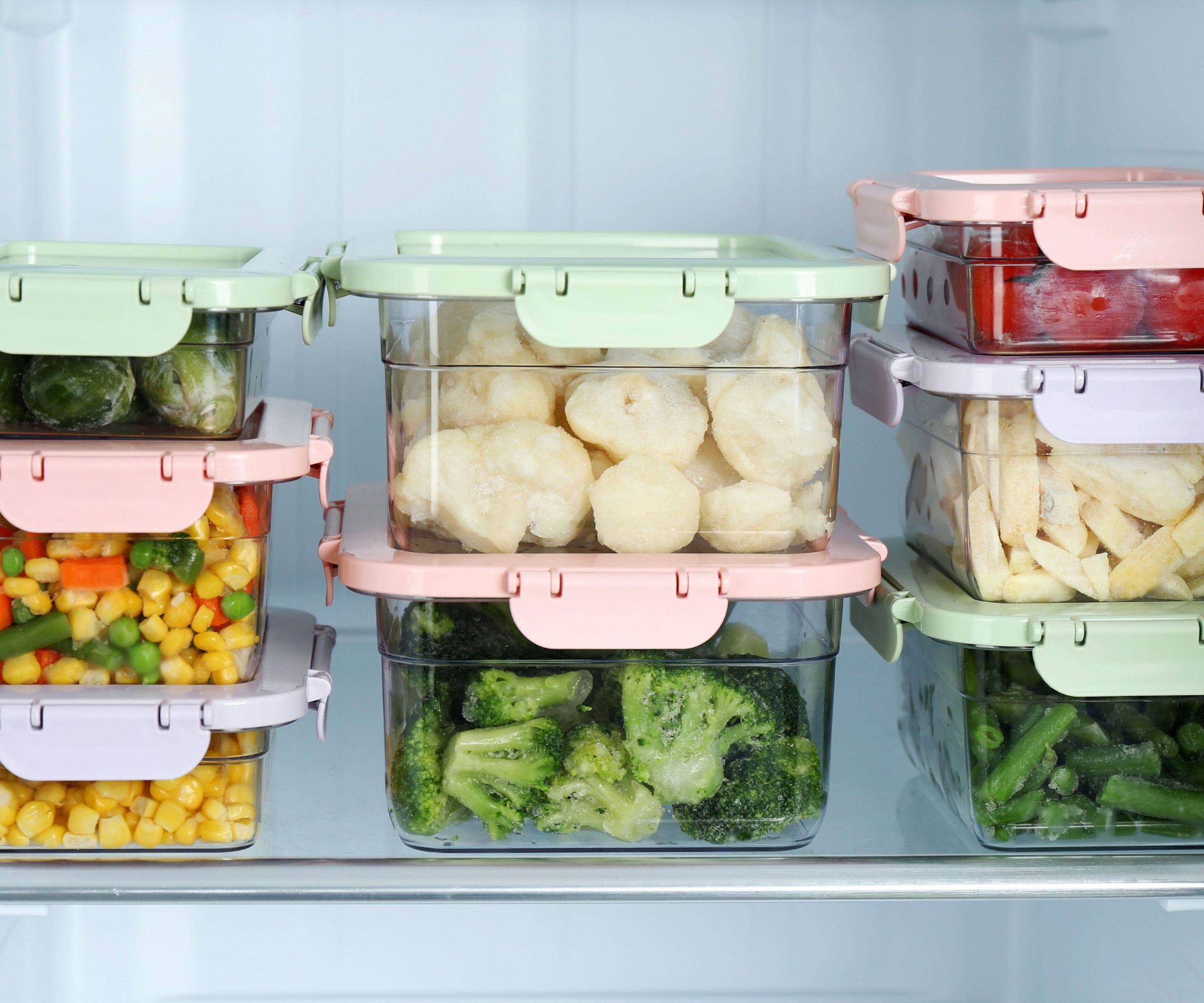
Organizing plastic containers is a hassle. No matter what you do, they are always falling out.
Our best advice? Get rid of them and replace them with some non-toxic kitchen essentials like glass containers instead, suggests professional organizer Brenda Scott of Tidy My Space.
She says, ‘After setting aside those that can go straight away, ask yourself if you use the remaining Tupperware. You might have used them previously, perhaps when children were younger, but if times have changed you may no longer need them. Consider reducing your stock and investing in earth-friendly glass food containers, at Amazon, going forwards.'
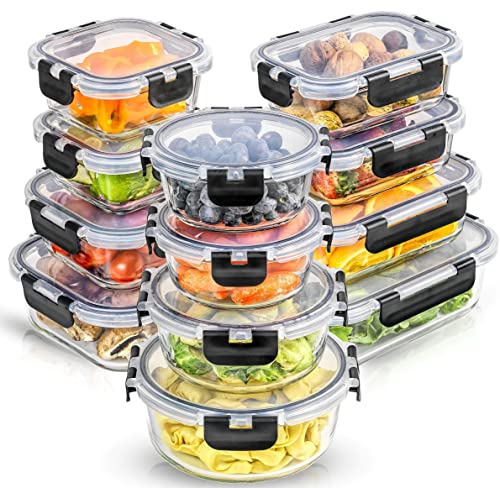
These glass storage containers with lids are perfect for food prep and leftovers as they are safe for the oven, fridge, freezer, and microwave.
5. Unused appliances
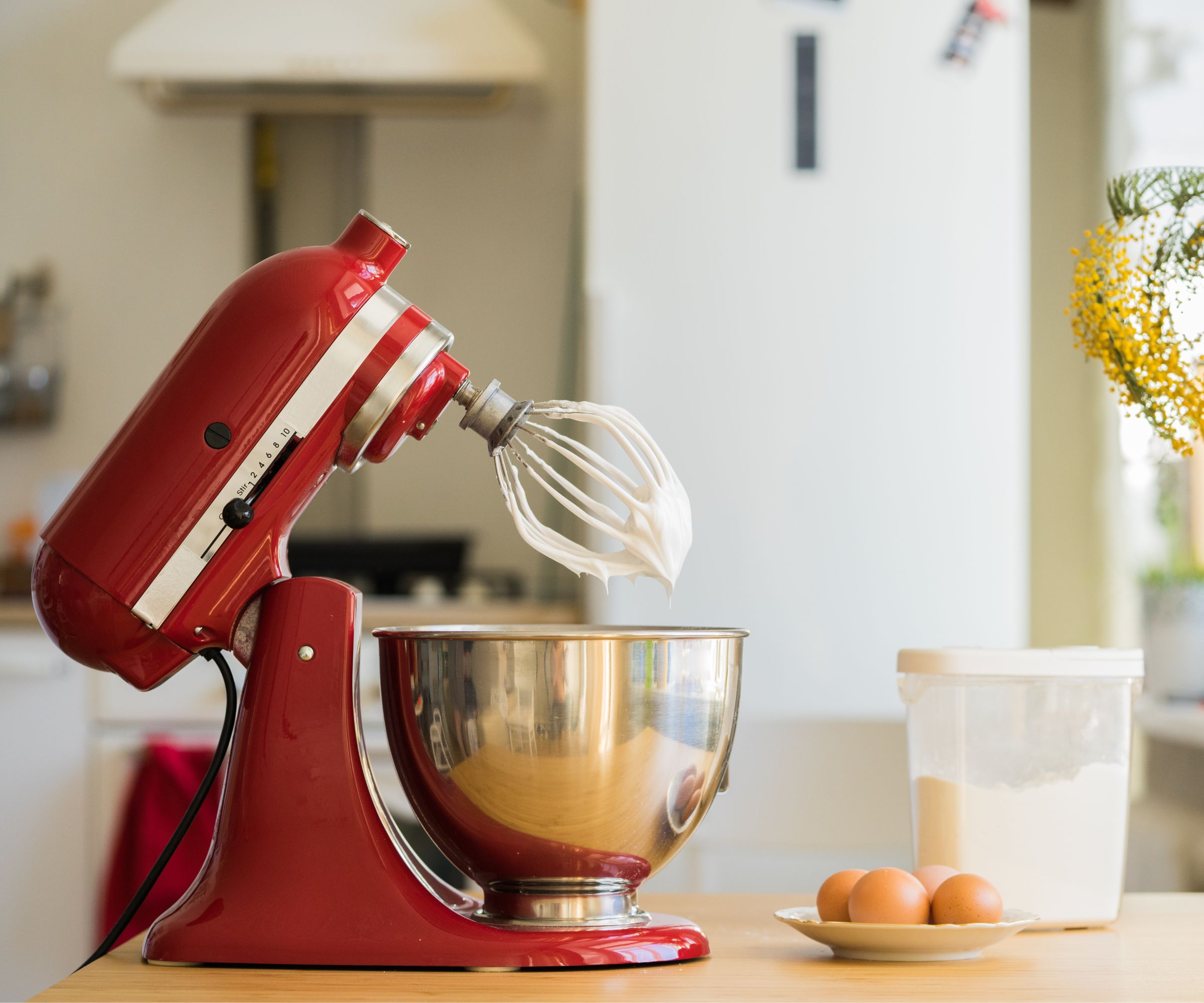
To make organizing kitchen appliances easier, consider getting rid of the ones you barely use. Really, when it comes to decluttering countertops, bulky appliances should be the first thing to go.
Not only are they a bit of an eyesore, but they take up valuable countertop space. A good rule to go by is to only keep out the gadgets you use daily – the rest should be stored away.
6. Food packaging
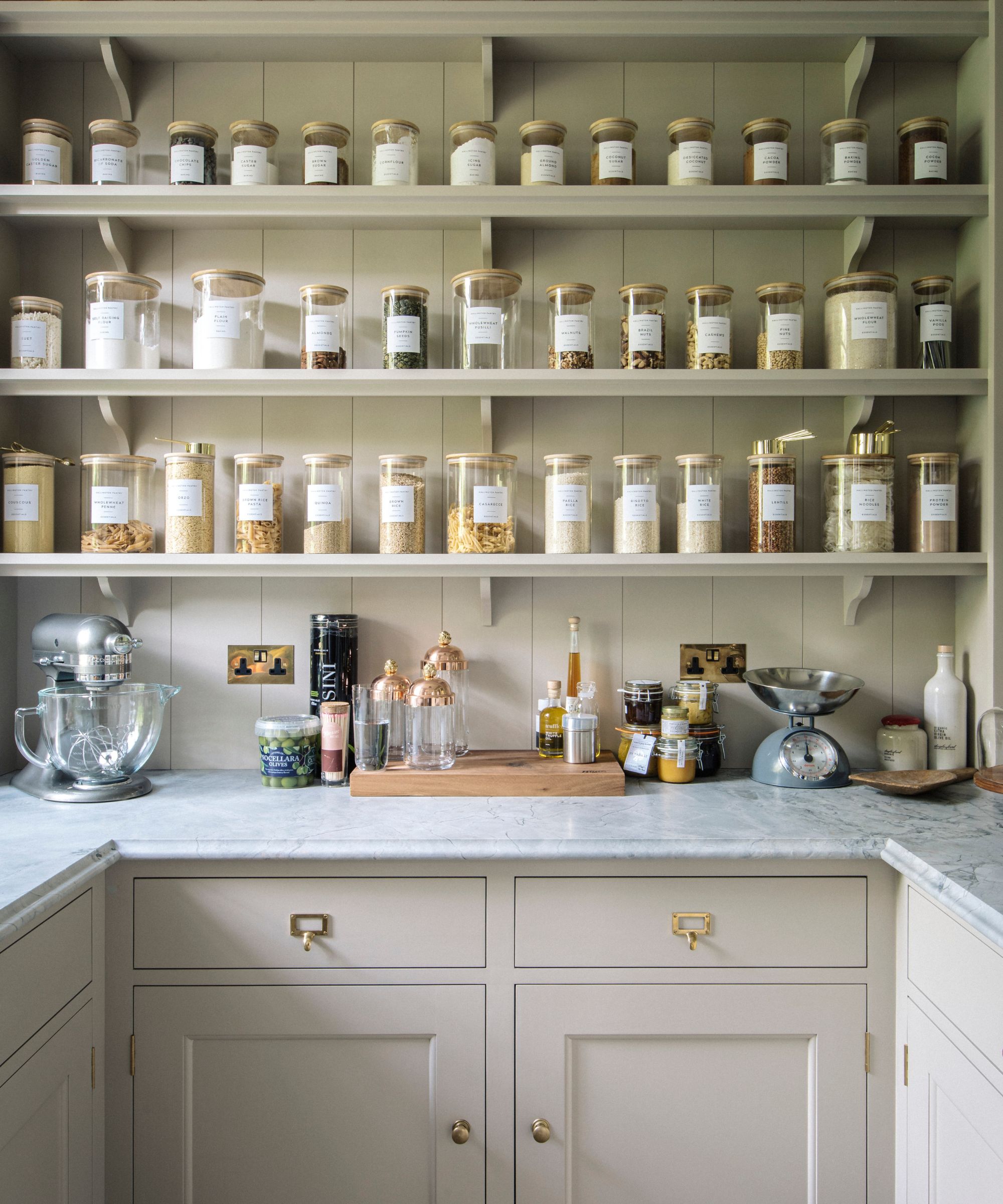
Catherine Davin, co-founder and interior designer of Clairrow says, ‘Removing packaging from food where possible not only frees up space but opens up new, more practical, possibilities for your kitchen storage. Items like coffee pods or tea bags can sit directly in a drawer organizer, while other items like cereal, can go into airtight containers, at Walmart. This has the added benefit of allowing you to see when items are running low.'
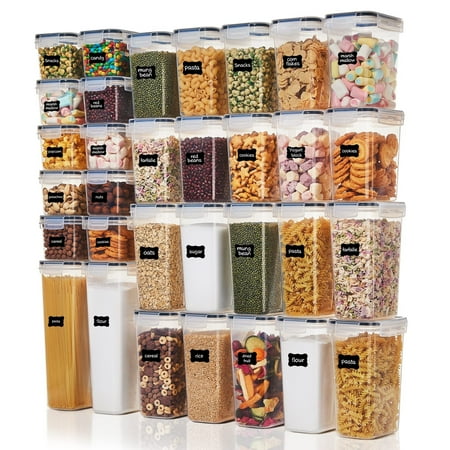
This complete food storage kit comes with air-tight lids to keep food fresh and matching black labels to mark up items and use-by dates.
7. Non-stick cookware
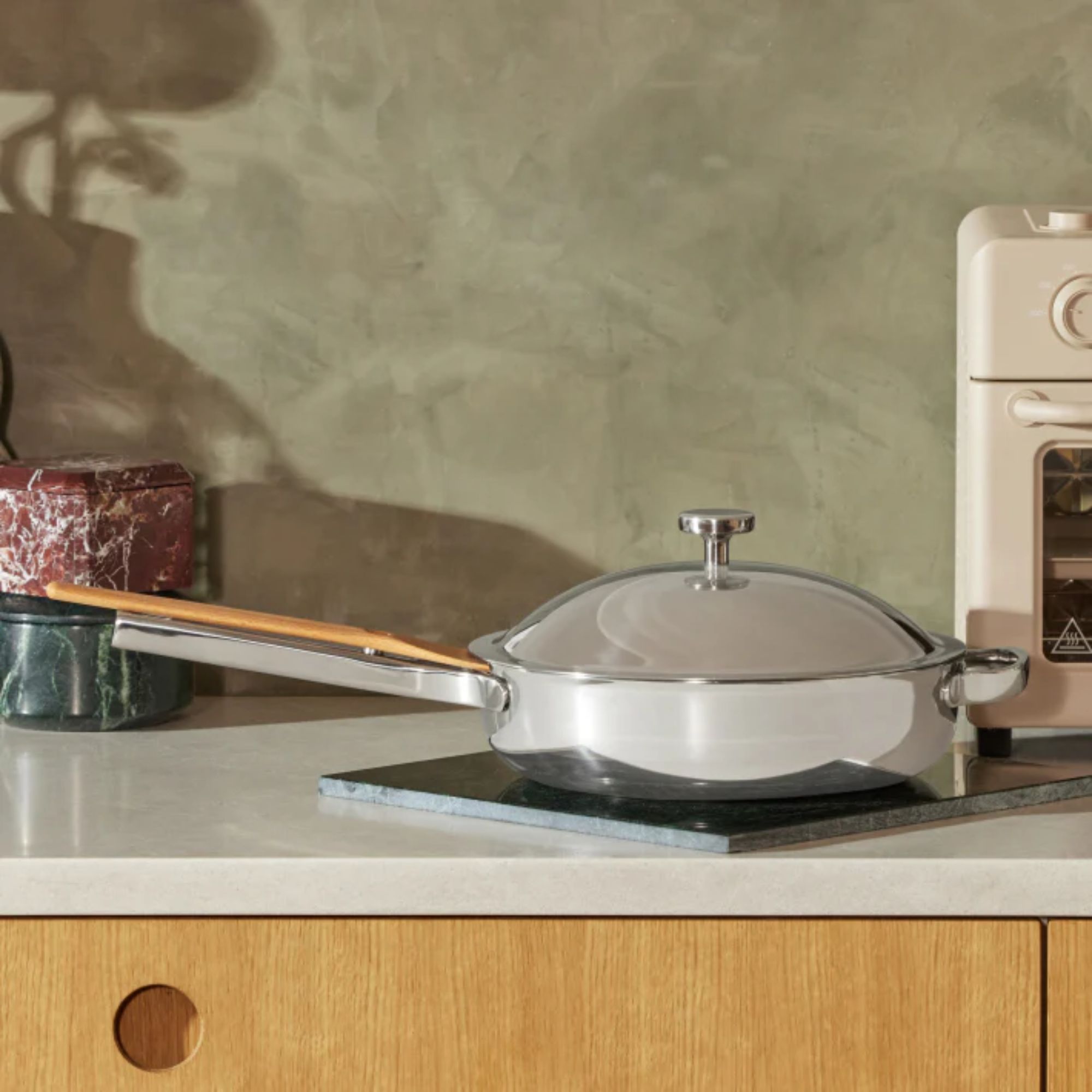
If you kitchen is full to the brim of non-stick cookware, it might be a sign it's time to replace your pots and pans.
Non-stick is handy for those of us scared of burning our food, but recent studies suggest it is highly toxic when heated.
Consider replacing it with stainless steel instead, which is far safer to cook with, doesn't scratch, and can be washed in a dishwasher.
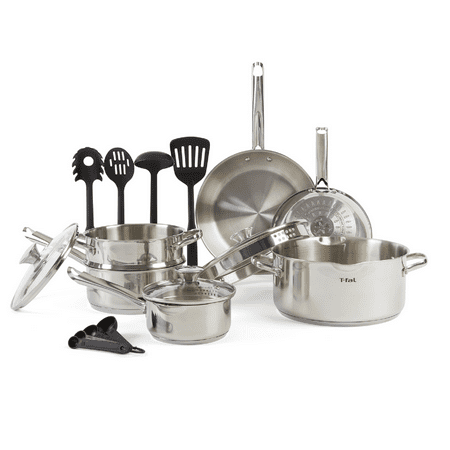
Stainless steel is one of the best options for cookware. It heats evenly, is not coated with chemicals, and is easy to keep clean.
Bedrooms
8. Unused clothes

Cutting back on the contents of your closet is job number one when decluttering your bedroom. Getting rid of clothing can be emotional, so it’s important to be strict with yourself. Does it still fit? Is it in good condition? Have you worn it in the last year?
Delve into how you can declutter the home your fantasy self holds on to with ease.
Chicago-based organization expert Jessica Litman advises, ‘If you’re wanting to declutter your clothes fast, but struggling to make decisions, try items on and ask yourself how it makes you feel. There’s nothing worse than wearing clothes you don’t feel good in, so if that’s the case, remove it from your closet straightaway.'
Another tip is if you haven't worn it in the last year, forgot you had it or perhaps didn't know you had an item, it's time to recycle, donate or sell it.
Be sure to invest in our favorite velvet clothes hangers, available at Amazon – camisoles will never slip off again, you'll save time trying to wrap the tiny little straps around the extra hooks, and the hangers won't damage your clothes like wire hangers.
9. Old socks and underwear
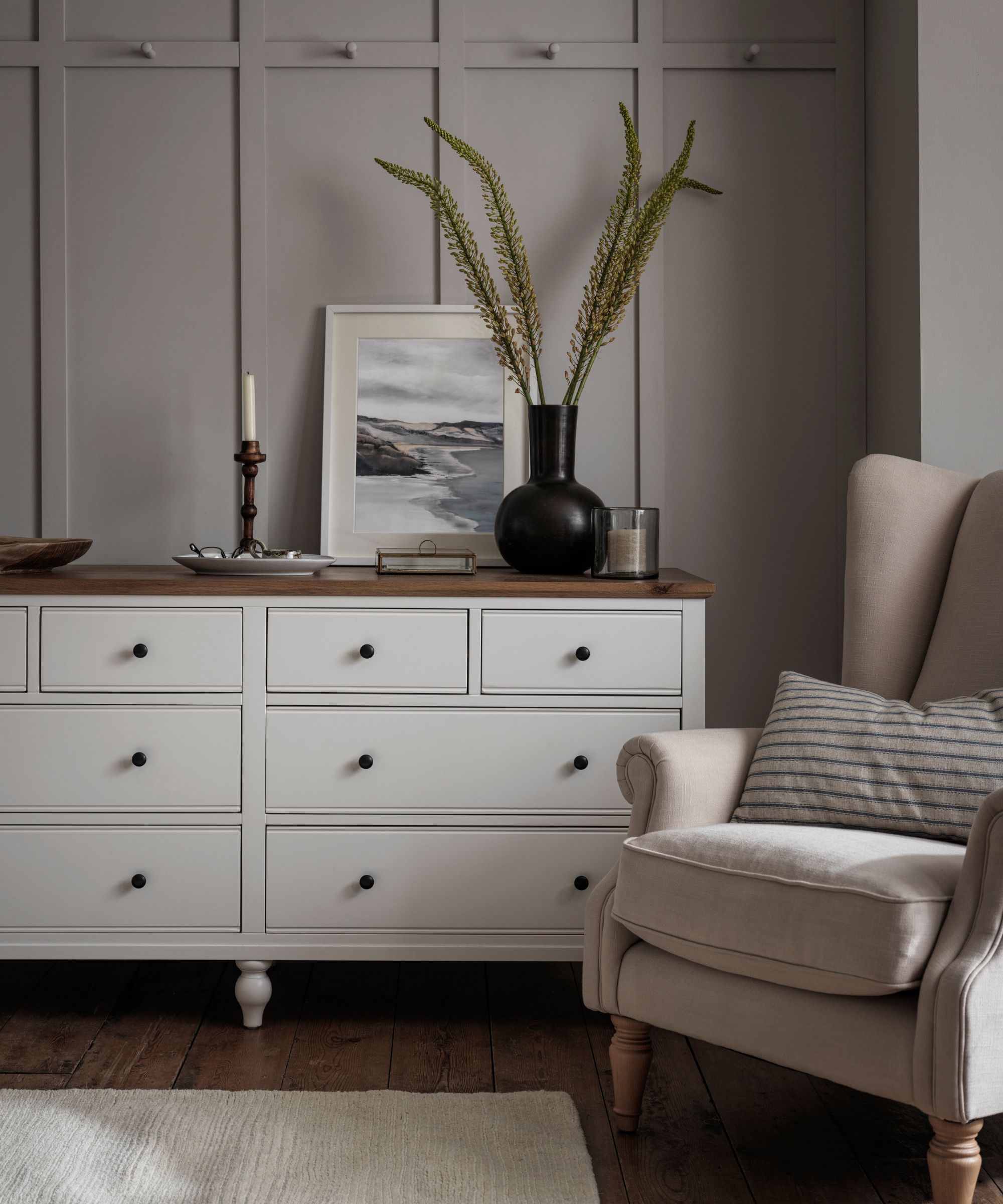
If you’re not a fan of the mismatched look, decluttering and organizing your sock drawer is always good, and can be done really quickly, too. Discard any that don’t have a friend, then have a think about how many pairs you really need. Punteha van Terheyden, head of Solved tried the Nate Berkus sock drawer organizing hack and it's kept hers in shape ever since with ease.
Rather than throw any extras, think about ways you could re-purpose unwanted items for cleaning around the house as cleaning rags or polishing cloths.
Do the same when organizing your underwear drawer – go through each item and discard anything that no longer fits, you never wear or isn’t in the best condition. Retain only the pieces you feel comfortable and confident in. When it comes to everyday undies, experts recommend leaving enough to last you two weeks, to avoid getting caught short with your laundry schedule!
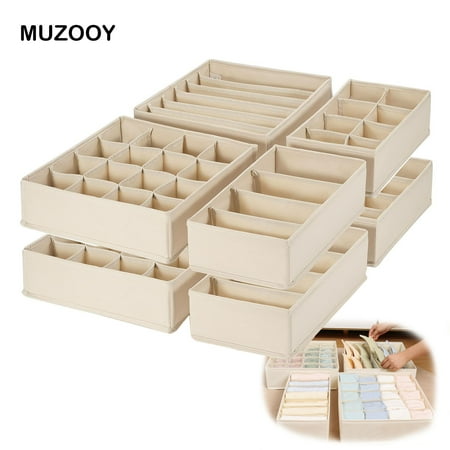
These fabric dresser organizers offer space to sore balled up socks and underwear in sets, making it easy to grab the items you need first thing in the morning.
10. Under-bed storage
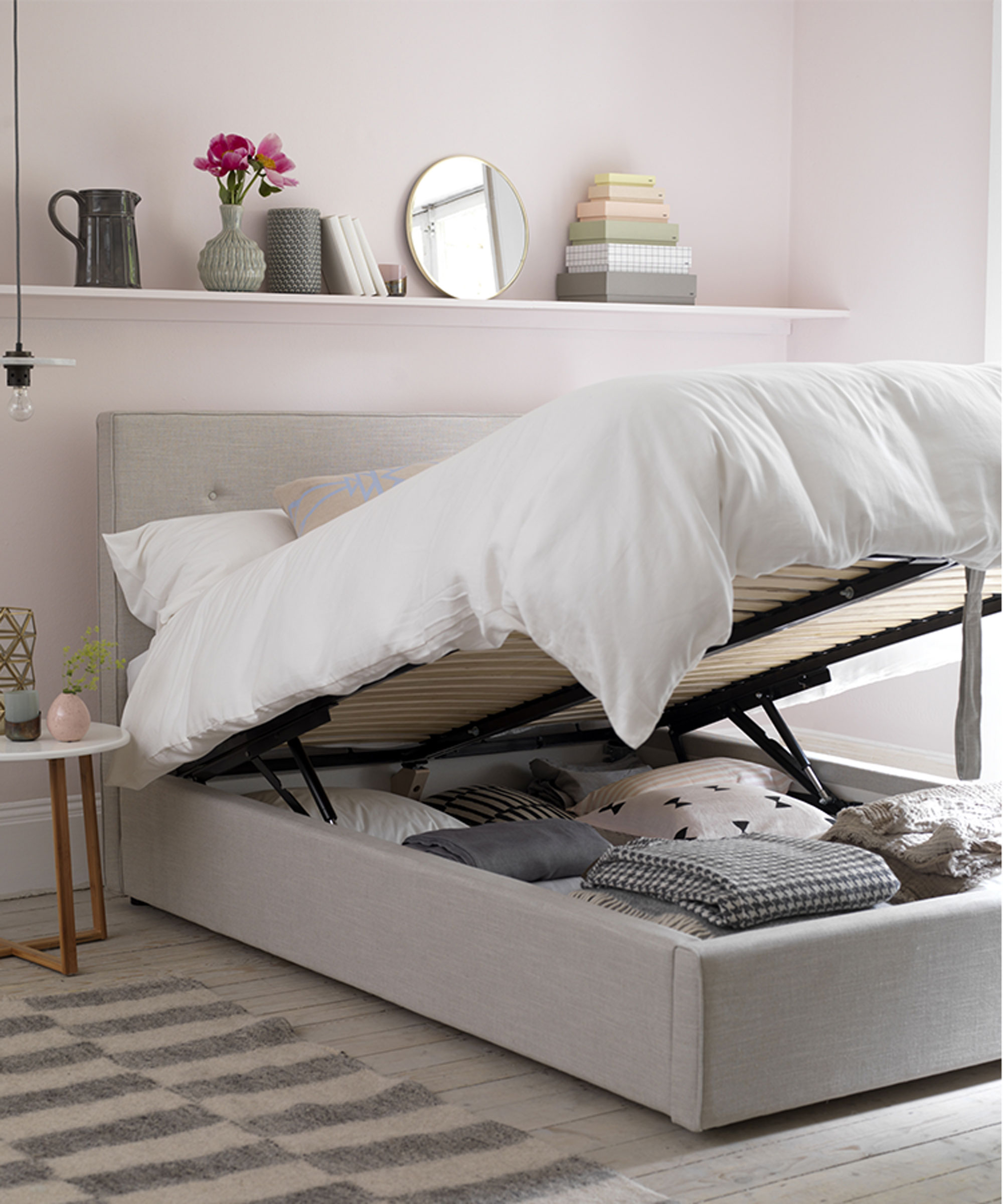
Under-bed storage ideas are among the best for keeping lesser-used items and seasonal clothing out of the way and ready for use later.
It is easy to forget what lives down there when it is so well hidden, however. Consider going through the contents twice a year (or whenever you switch around seasonal clothing) to double check everything is still used. Anything you haven't touched or thought about in the last 12 months is a good candidate for decluttering.

These bags on wheels make them easy to pull out quickly and access as needed, and the clear tops make it easy to see what's inside without having to dig through
11. Nightstands

Nightstands are magnets for clutter, housing everything we need last thing at night and first thing in the morning, from books to medicines to glasses and notebooks.
Given that decluttering a bedroom can improve sleep, it is important to clear this spot out every so often, getting rid of anything not directly related to your sleep routine.
Elizabeth Lulu Miranda, professional organizer says, 'The process of organizing and decluttering can reduce stress held in the body, lower anxiety, and clear your thoughts. When your space is orderly, it’s easier to focus, make decisions, and feel calm. This sense of tranquility can inspire self-care and help you maintain a healthier lifestyle, both mentally and physically.'
It's a great way to sleep better instantly.
Living rooms
12. Coffee tables and shelves
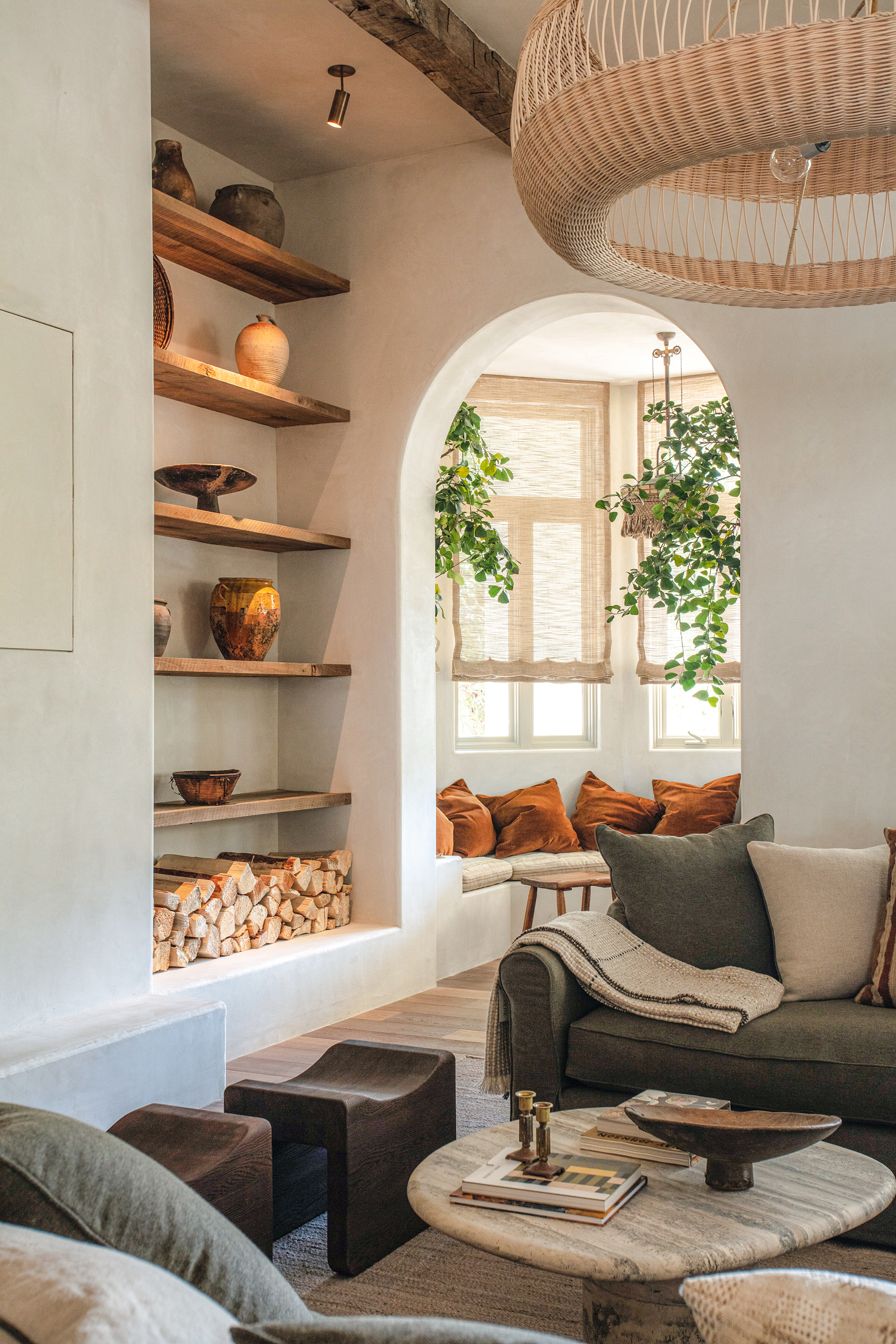
Jamie Hord, professional home organizer and founder of Horderly says, 'Decor, trinkets, and tchotchkes can quickly add up in family rooms which creates visual clutter and can generate stress, anxiety or depression.
'Instead of putting all of your decor out at once, display only a few at a time and store away the rest. You can then switch it out seasonally which will be a great refresh to your space!
'You can also try exchanging any bright colors with earthy, calming hues to create a more calming space.'
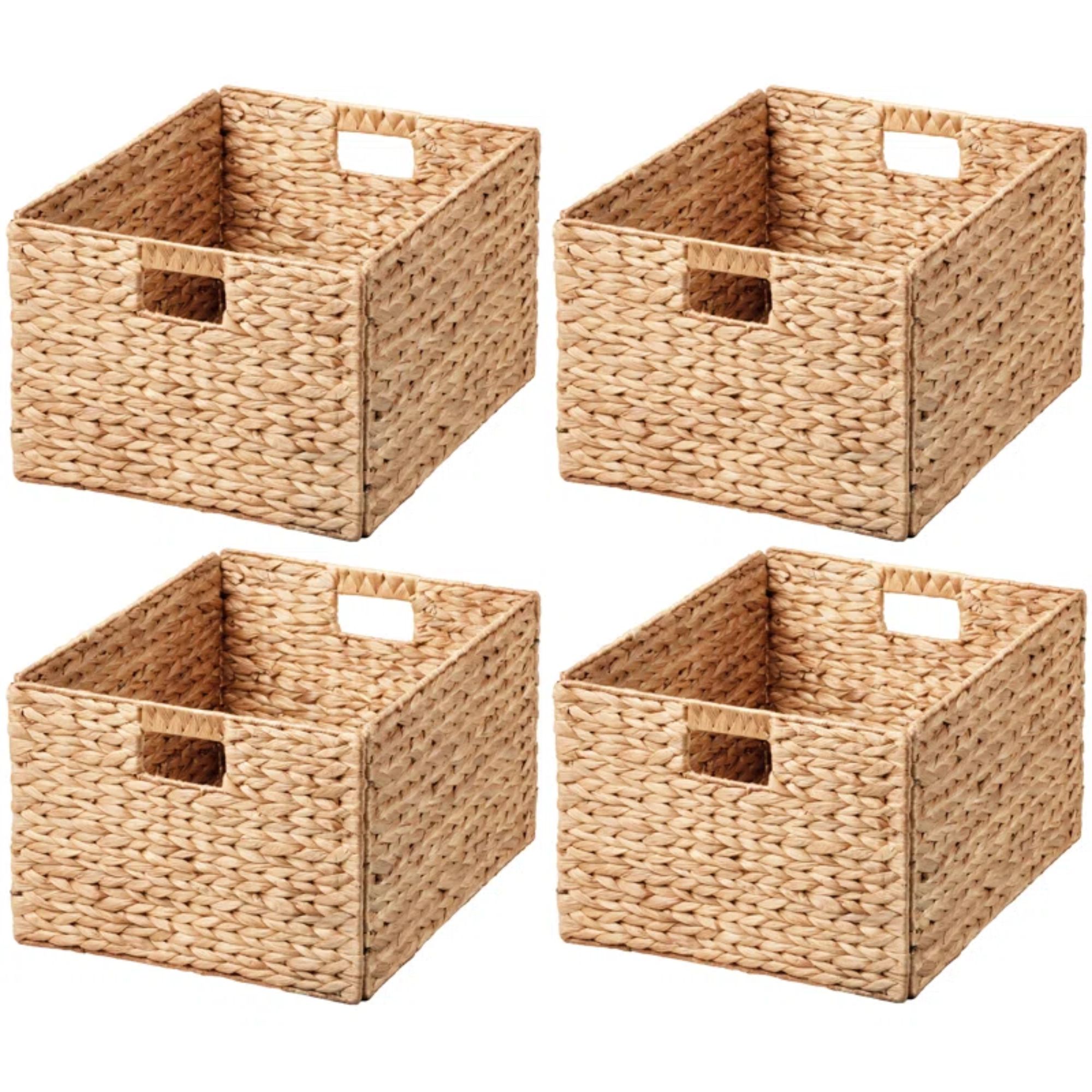
Keep living room essentials like charging cables and remote controls inside woven storage baskets, minimizing visual clutter without making items inaccessible.
13. Toys

It can be tricky to get little ones on board, but decluttering toys can actually be beneficial to their play (too much choice often leads to overwhelm) and makes tidying up easier on everyone, too. Keep it simple to start with; focus on broken toys, full coloring pads, used sticker books, and anything that no longer has a use. Next, tackle outgrown or unloved toys.
Professional organizer Vicky Silverthorn of You Need a Vicky says, ‘If you’re donating items, explain the importance of sharing and giving; donate toys to charity shops, nurseries, or family centers so your kids know they’re going to make other children happy.'
Having cut down the collection now is a great time to invest in storage solutions, such as baskets with lids, at Walmart or a storage ottoman such as this storage footstool from Wayfair, to contain the rest.
14. Magazines and books
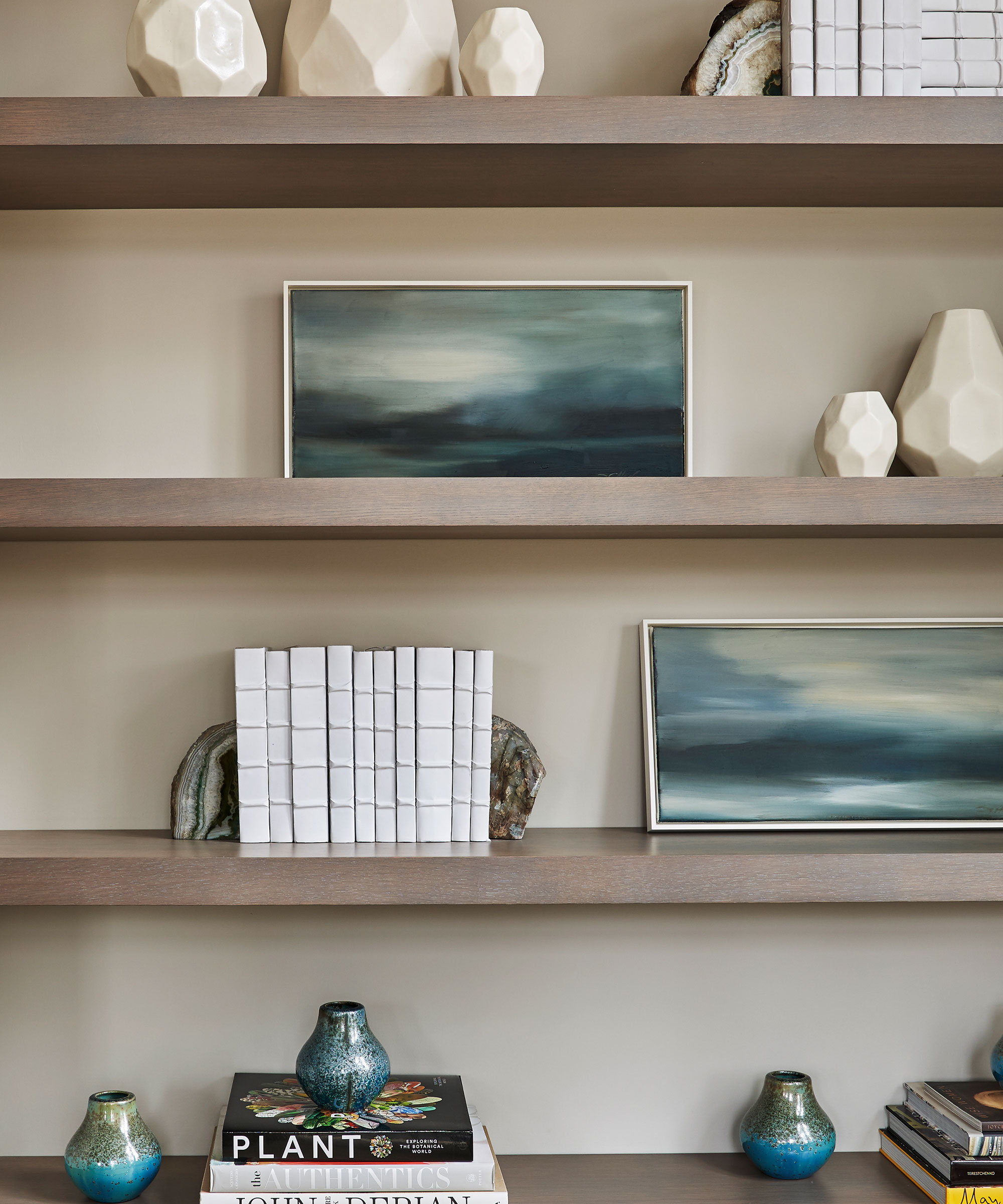
Tell a bookworm to declutter books and they will accuse you of blasphemy. Nevertheless, it's always good to have a clear-out to make room for new additions.
Professional organizer Amy Bloomer of Let Your Space Bloom advises, 'Place books and magazines where you will read them, such as on a bedside table, and commit to recycling immediately after reading them. If there’s any information you want to save, take a picture of it first.'
If you’re prone to piles, consider online subscriptions instead – It’s better for the planet, and you can read them anywhere. Whilst you’re at it, go through your emails and unsubscribe from mailing lists that you no longer want to receive paper mail from.
If you are an avid reader but you're running out of space, investing in a Kindle from Amazon is a great way to get your reading fix without adding to clutter.
Bathrooms
15. Medicine
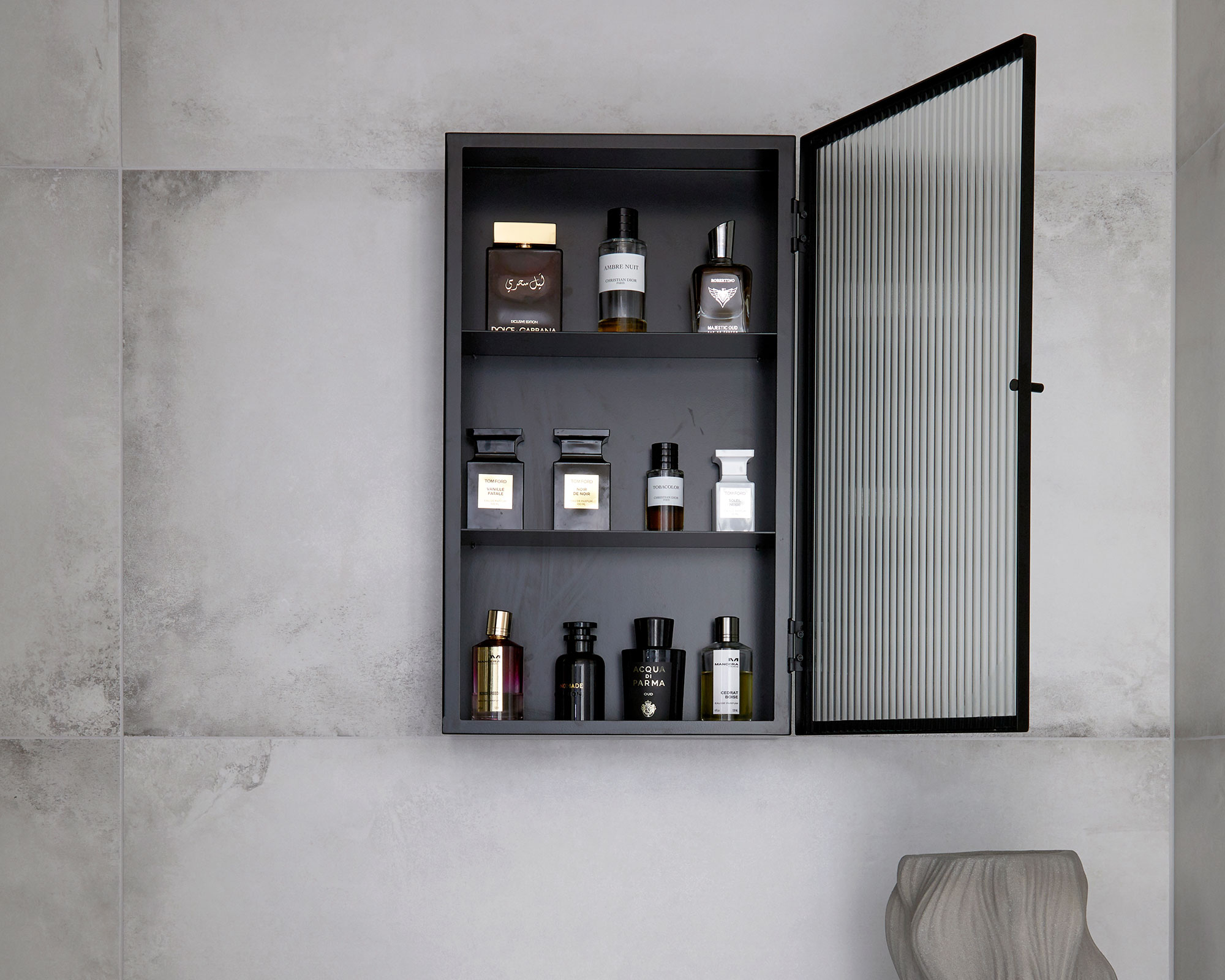
When you’re feeling unwell, there’s nothing worse than rummaging through your medicine cabinet only to find expired painkillers or empty packets of cough drops.
To organize medicine cabinets, set aside any unneeded or unused medications, then rid yourself of anything past its expiration date; chances are they won’t be as effective anymore anyway.
Be sure to dispose of any drugs and medical paraphernalia safely and responsibly at your local drugstore.

These easy-to-store lock boxes are ideal for medications, helping to keep them away from children and minimizing the risk of poisoning. Keep medicines out of sunlight and away from heat and humidity
16. Old linens and towels
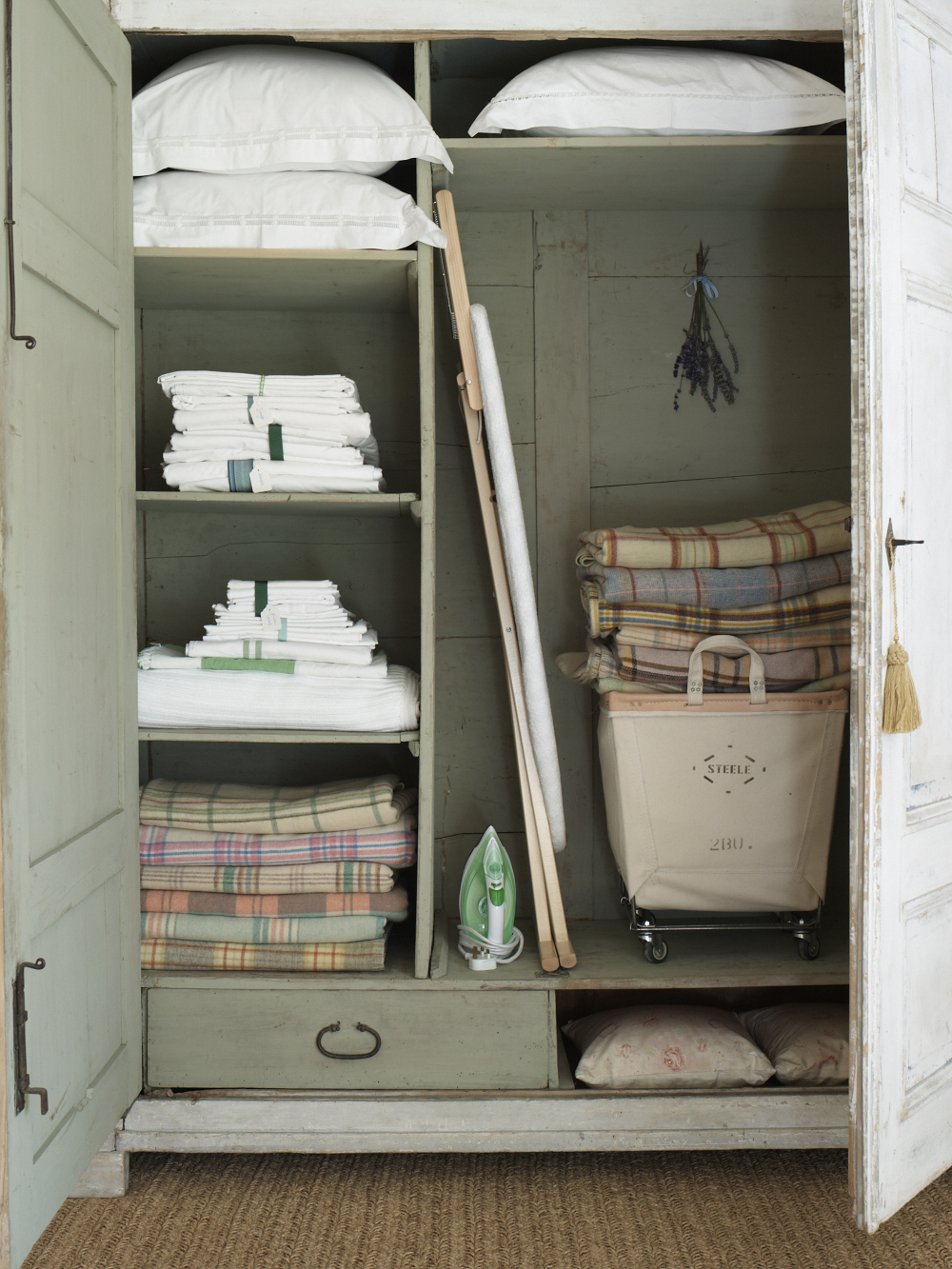
Go through your linen closet shelf by shelf, removing worn-out towels, blankets, and sheets – your local animal shelter will be happy to take these off your hands.
If you’re alternating between just a few favorite bed sets, designate the rest as ‘guest linens’, and store them elsewhere so they’re not taking up prime storage space.
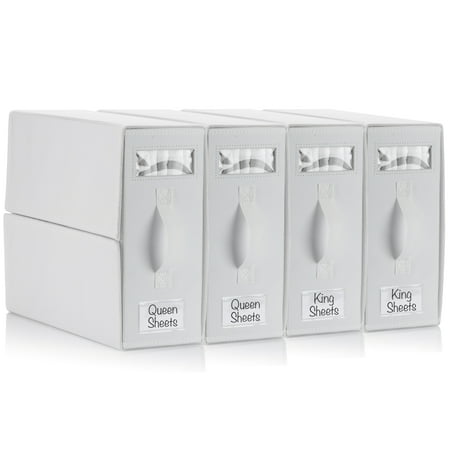
Tired of digging through piles to find the right bed linens? These handy boxes perfectly fit one bedding set inside for you to grab and use without any hassle.
17. Old toiletries
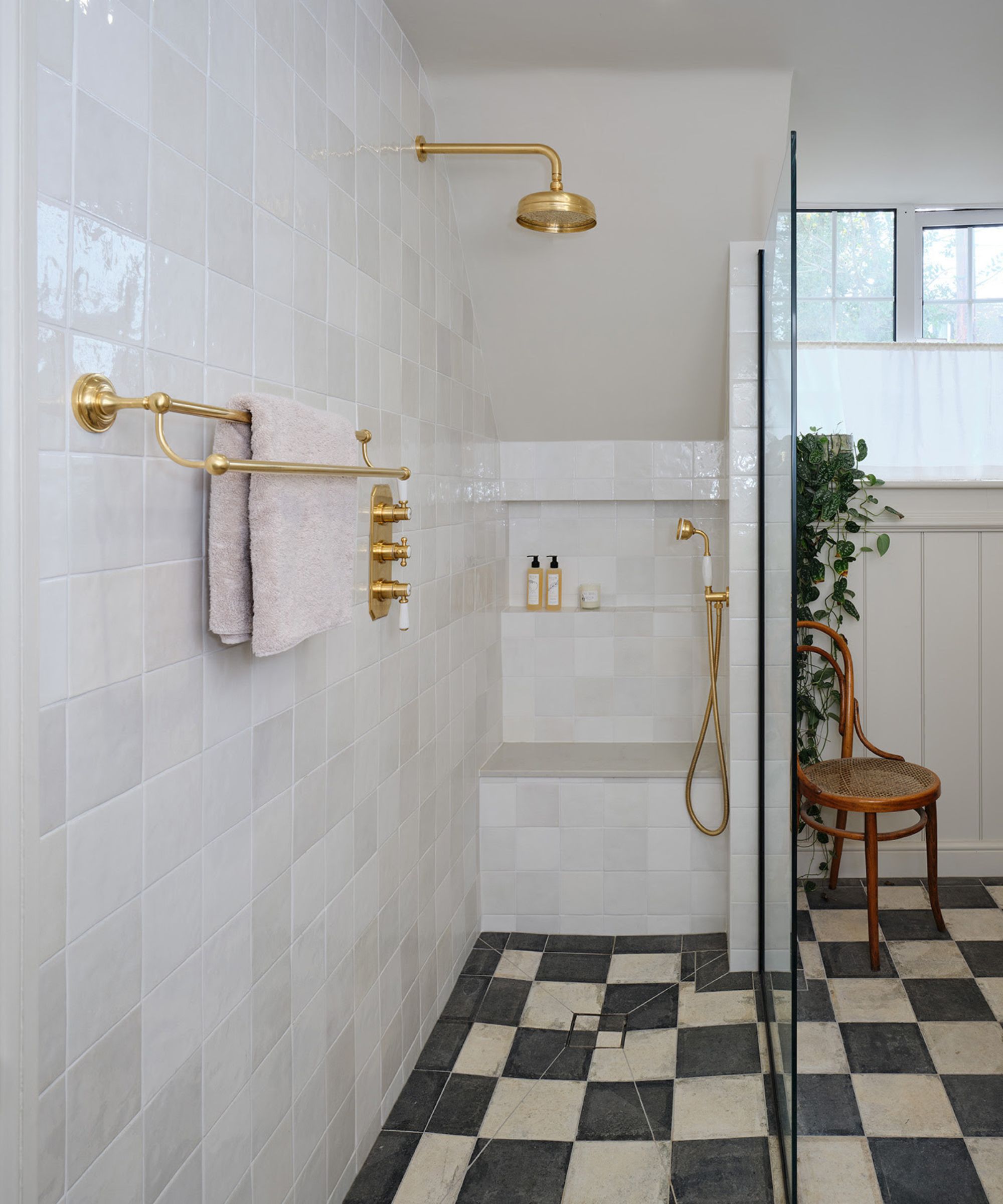
Sarah Dunn professional organizer and owner of Ready Set Organize says, 'With gift sets, free samples, and general day-to-day washes and cleansers, products can quickly build up. Cutting the clutter from your getting-ready routine can make for a much smoother start to the day, and will make you feel better in general, too.
It's empowering to know and use what you like and what makes you feel good. We’re all guilty of hanging onto products just because we spent money on them, but if you don't like the scent or the way they make your skin feel, don’t feel obliged to hold onto them'
18. Make up
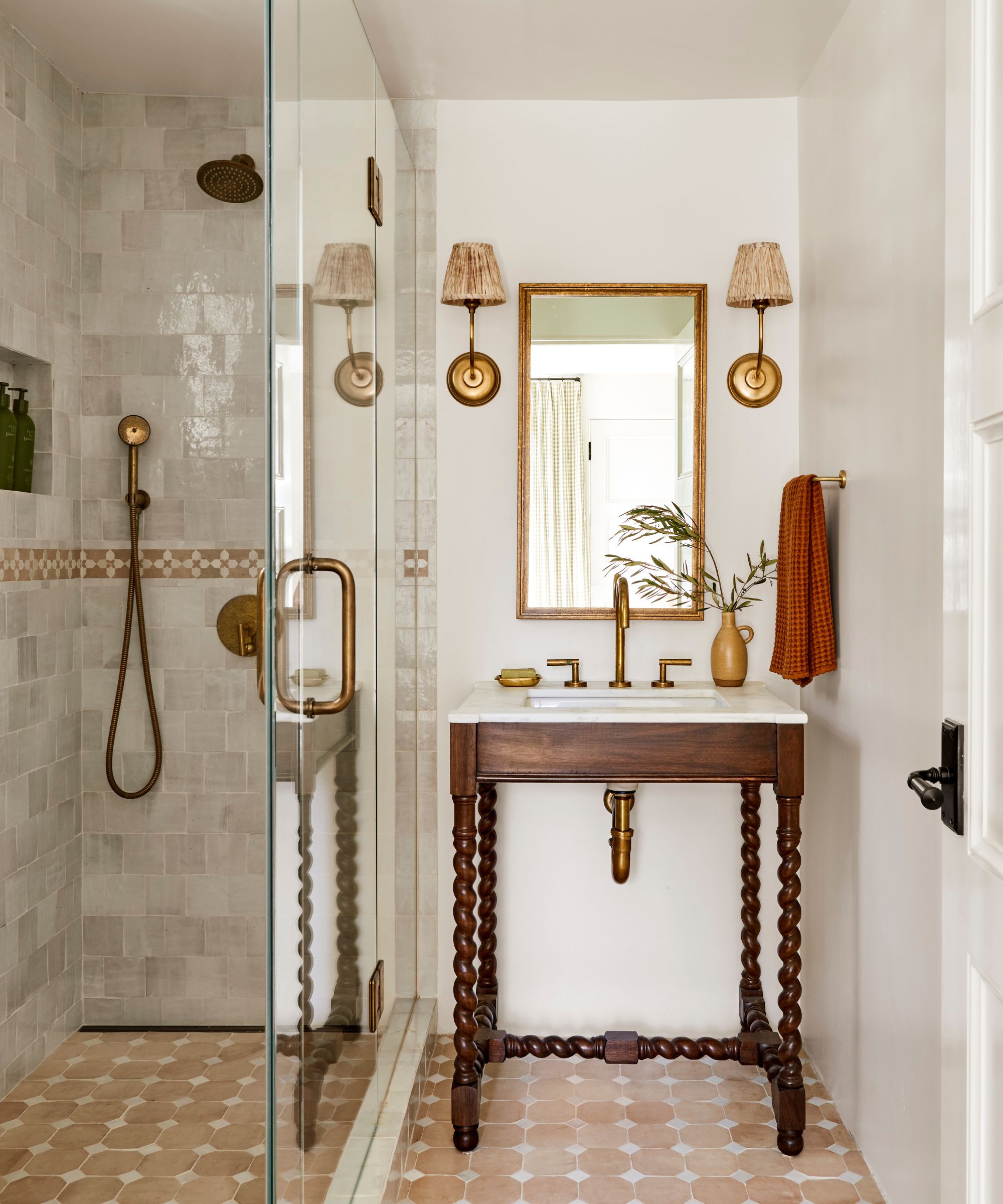
Decluttering makeup and skincare can feel like a mammoth task, but it is a must-do task to keep your skin healthy.
Valeria Aparovich, biochemist, certified cosmetologist-aesthetician, and science team lead at OnSkin says, 'Cosmetic products can degrade when exposed to the Sun’s ultraviolet rays, high humidity, extreme cold, and heat. While cold temperatures are uncommon in bathrooms, the rest of the damaging factors are present. They can alter the chemical compositions and physical properties of cosmetics, diminishing their effectiveness and shelf life.'
Get rid of anything that you have had in your collection for longer than a year, anything you don't like on your skin, and items that are hitting the pan.
To organize skincare and cosmetics, Valeria adds, 'If your vanity has sufficient cabinet space, storing all beauty products inside is best. If space is limited, prioritize items in non-opaque or non-airtight bottles and jars, as they are more vulnerable to sunlight and humidity. If your bathroom has a highly humid environment, consider putting your products into tightly sealed containers first for additional protection against moisture buildup.'
19. Cleaning products
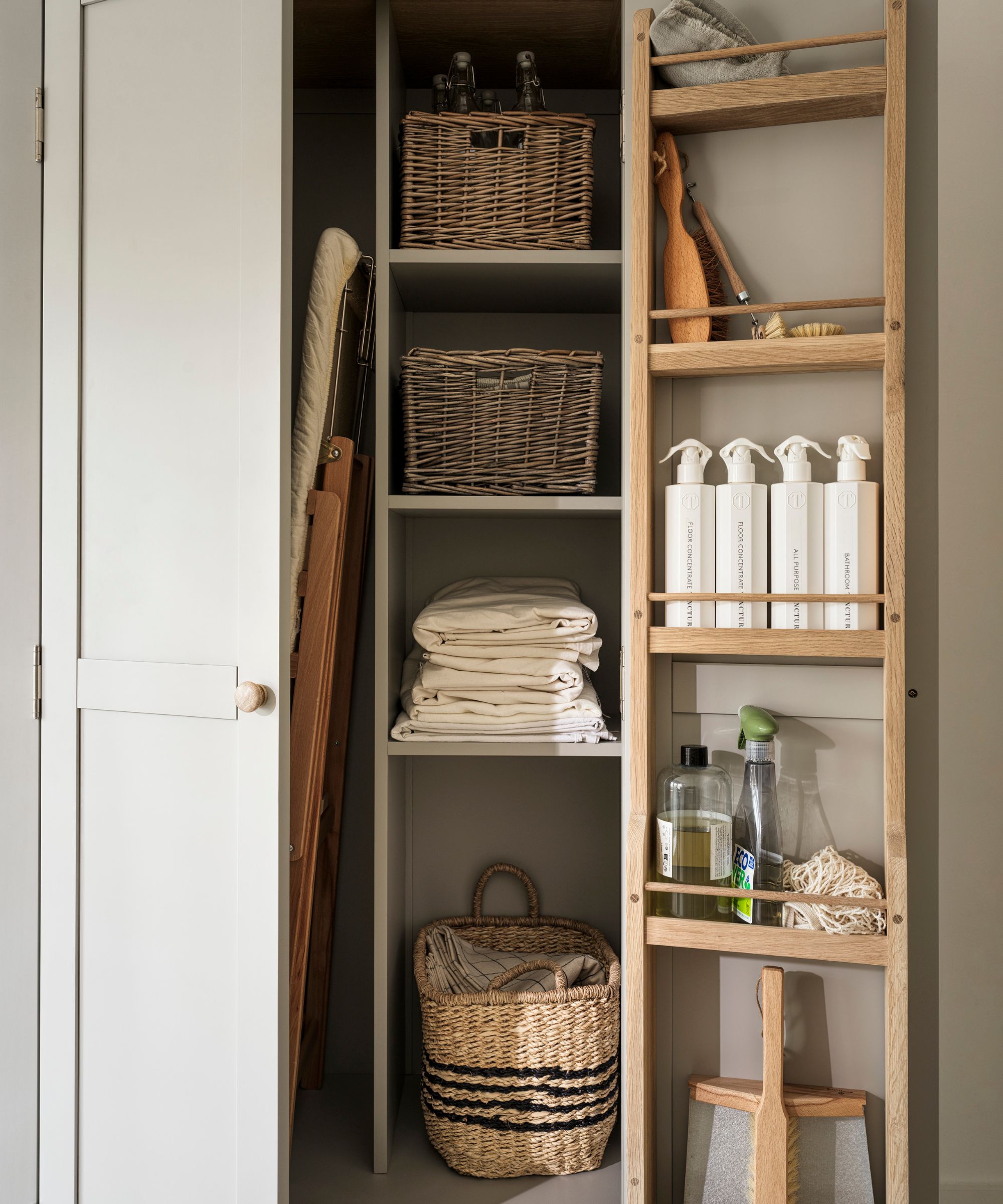
You might not think it, but cleaning products expire just like anything else. Before organizing cleaning supplies, check the expiry dates, and get rid of anything that has been sitting in your cabinet for more than a year.
Marilee Nelson, co-founder of Branch Basics also says, 'Remove all chemical cleaning products with zero ingredients listed and any labeled with “warning,” “danger,” or “hazardous”.'
Replace these with DIY cleaning solutions and green cleaning alternatives such as white vinegar and baking soda to help clean your home without harming the planet or your health.
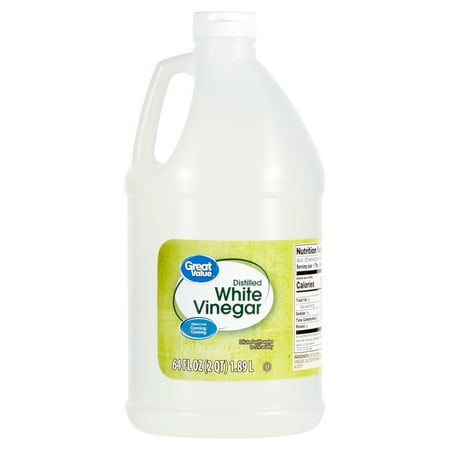
White vinegar is perfect for killing mold, getting rid of odors, and removing sticky residue from surfaces, making it a great all round cleaner for your home.
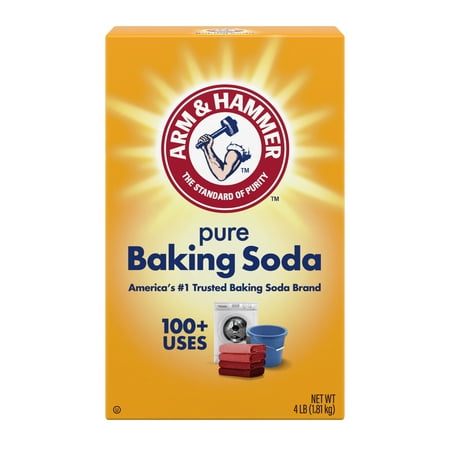
Baking soda is a natural abrasive that helps break down tough deposits without scratching delicate surfaces such as metal and glass. Mixed into a paste with water or vinegar, and it is safe for use in most areas of your home.
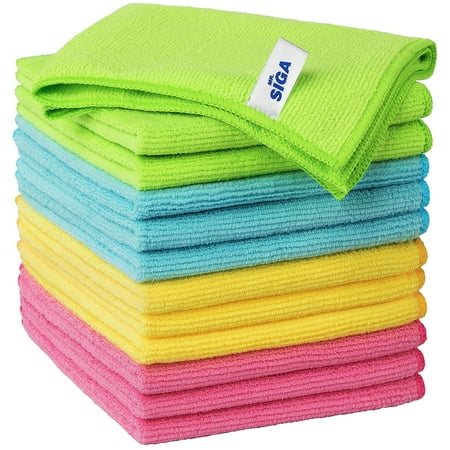
Microfiber cloths are more environmentally friendly than paper towels. Just be sure to wash them in warm water without fabric softener to keep them absorbent.
Dining rooms
20. Old crockery
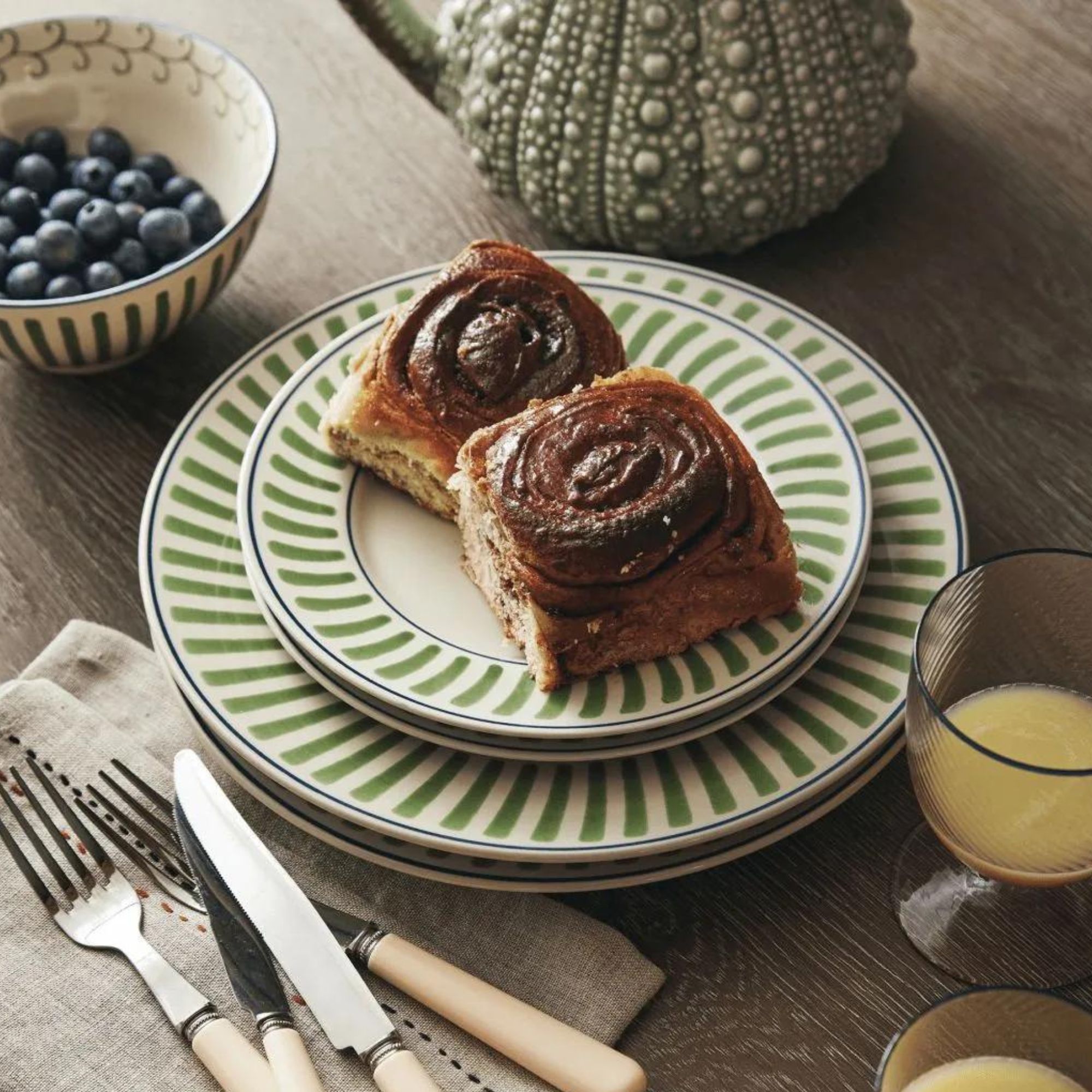
To declutter a dining room, start with your plates and serving dishes.
Many of us keep hold of sets with missing pieces, or large platters that we only use once every few years. The chances are we can live fine without them, so clear them out to make a little more space for essentials in your dining room storage.
A telltale sign you need new dishes is finding sets with lots of missing items, chipped or broken plates, or plates that no longer excite you when you come to set up your tablescaping ideas.
21. Table linens

They might fold up, but piling tablecloths and napkins on top of one another in cabinets takes up a surprising amount of room.
Take some time to pull out any wild and wacky linens that you never use (including those super old stained Christmas cloths) and repurpose them around your house as paint drop cloths or cleaning rags.
When choosing a tablecloth, opt instead for a neutral base (such as this linen-look tablecloth from Walmart) that you can build your tablescaping ideas on top of. This way, you only need one, saving precisous storage space for other tale essentials like candlesticks or cutlery.
Garages, basements and attics
22. Cardboard boxes
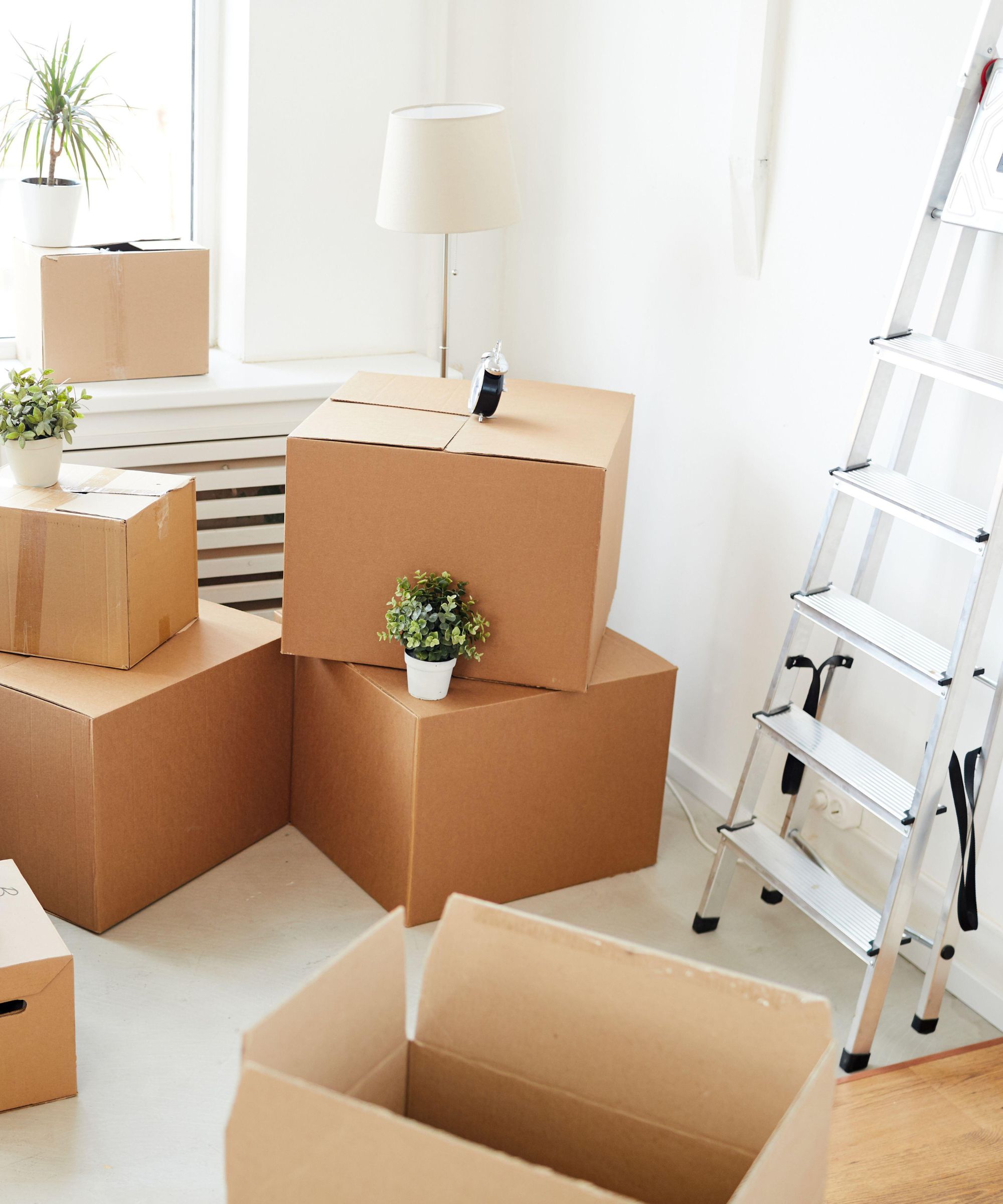
One of the worst storage mistakes people make is using cardboard boxes to store items in damp, drafty spots like garages, basements, and attics.
These areas are subject to frequent humidity and temperature fluctuations, both of which can degrade cardboard boxes quickly, and damage the items inside.
Instead, it is advisable to use large plastic totes with air-tight lids, from Amazon. Not only will they last longer, but your items will be safe from mold and even pests.
23. Bulky, unused equipment
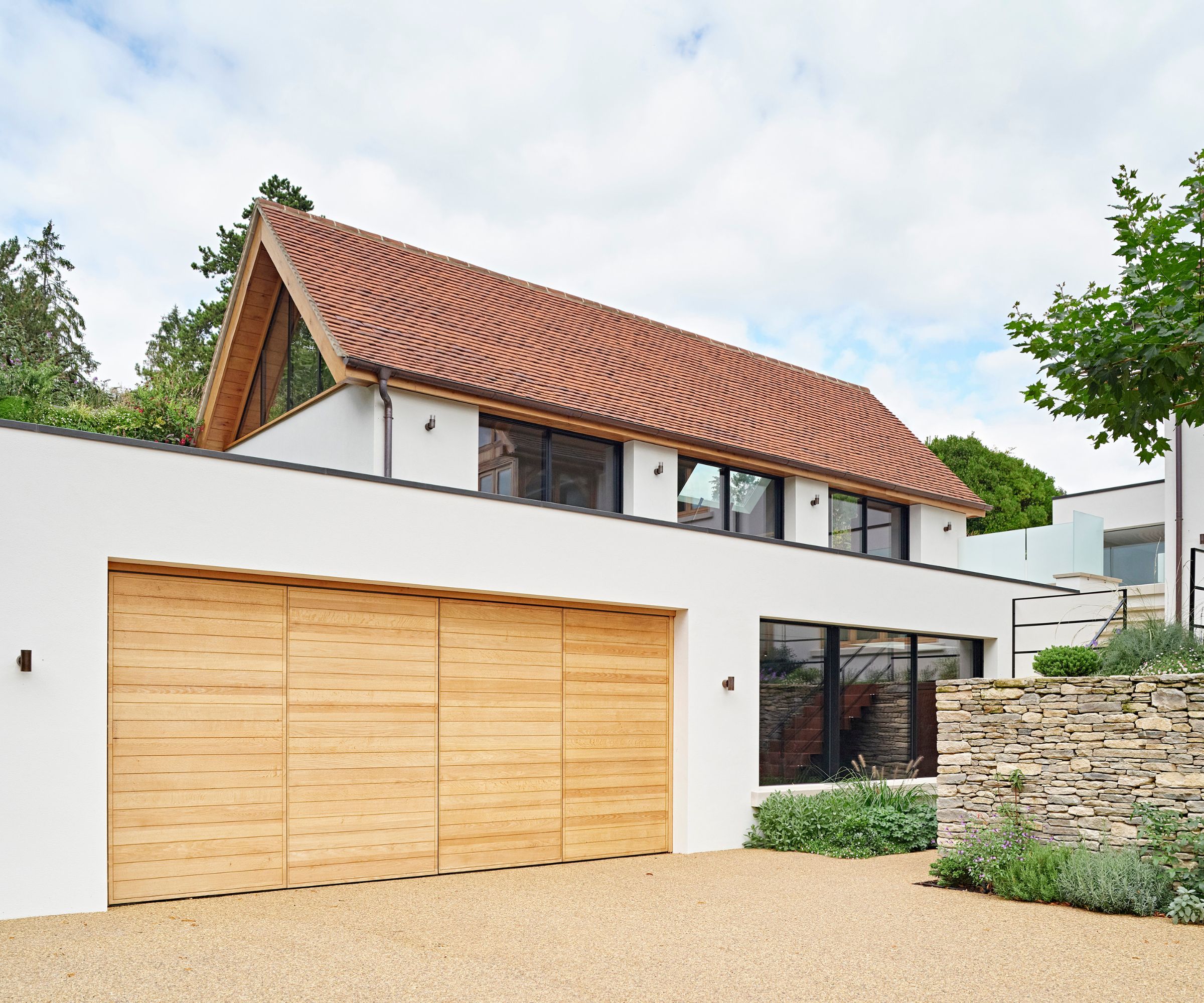
We are all guilty of hoarding large tools and equipment in hidden corners of our homes. From the old lawn mower to the unused running machine, to the bikes that ended up going rusty.
Holding onto items 'just-in-case' can lead to guilt and stress, leaving you obsessing over the money spent. The likelihood is you will just end up avoiding the item entirely, leaving it to clutter up your home.
When decluttering a garage or attic space, be realistic about what you have not used in the last 12 months. Anything that was not worth your time in the last year should be removed.
24. Holiday decorations
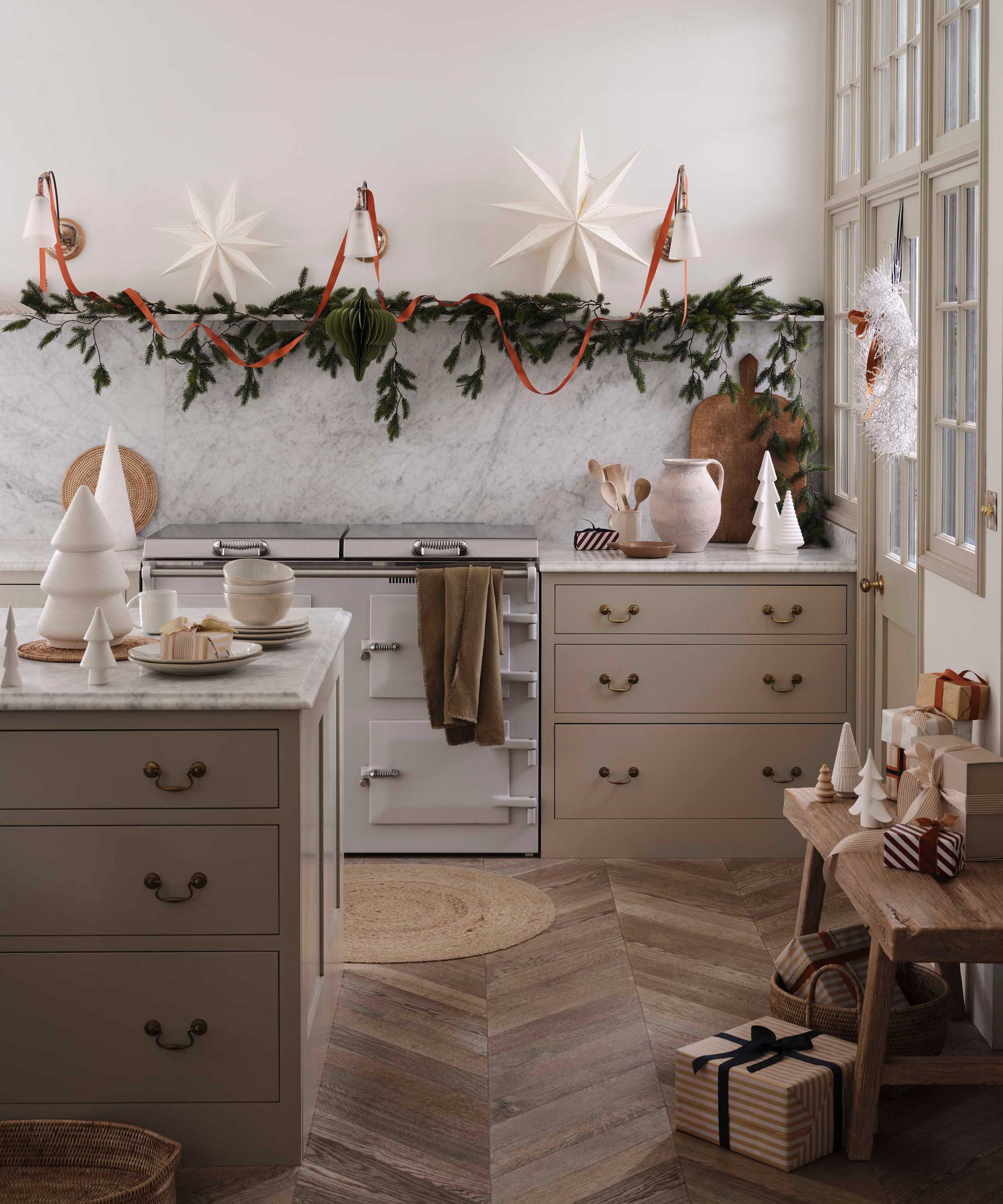
From decluttering Christmas decorations to decluttering Halloween decorations, there is almost always a box or two of decor that we haven't touched for the last few years.
The chances are if it did not find its way into your decorating scheme last year, it won't next year either. Consider donating any items in good condition ahead of the holidays for other people to enjoy.
Entryways
25. The coat closet
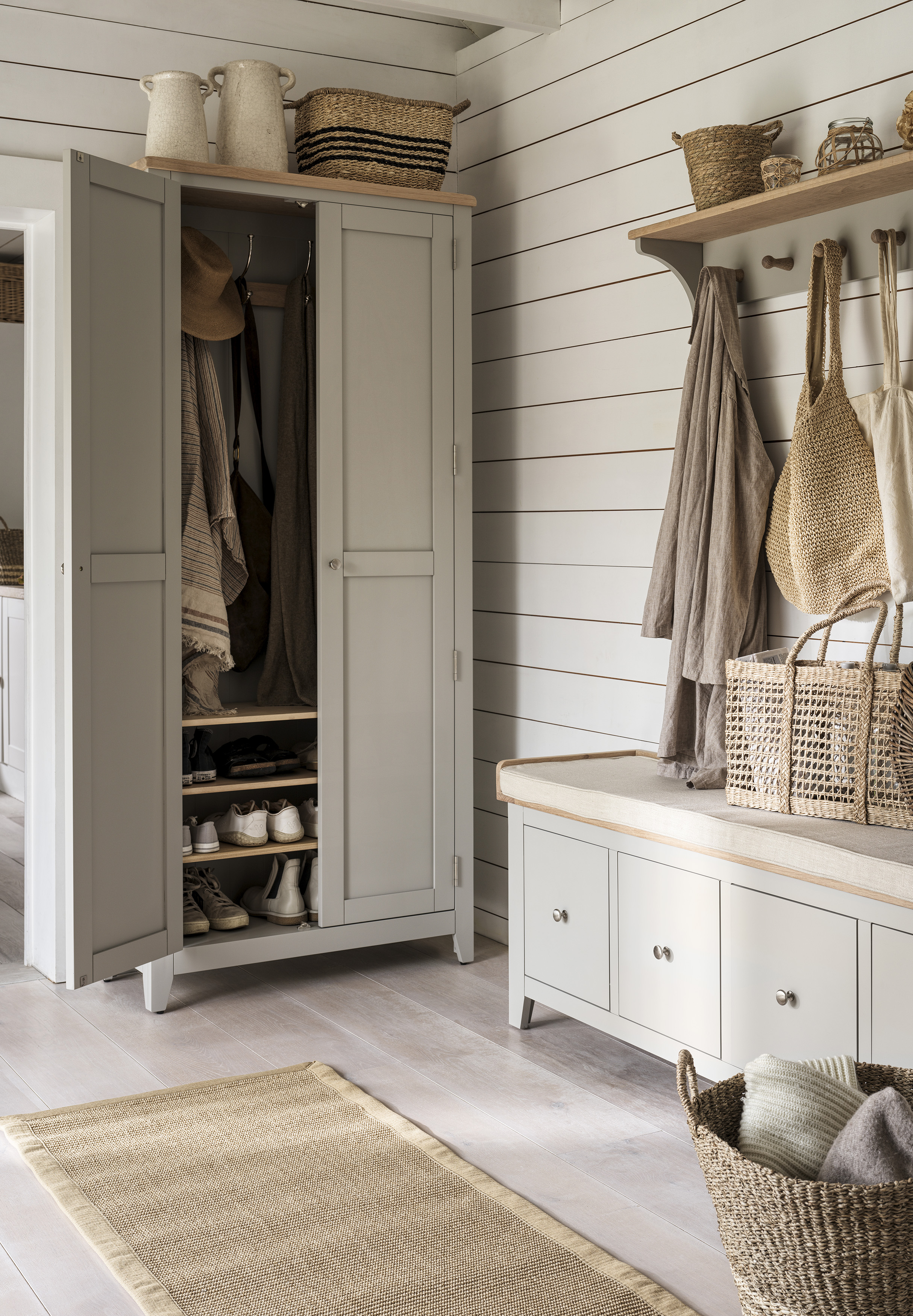
Not every single item of outerwear needs to live in your entryway at all times. Declutter your entryway by season; swap out winter coats, boots, hats, scarves, and gloves, anything you don’t need during the sunnier months (and vice versa), and stash them elsewhere. Take the opportunity to get rid of items you no longer want each time, too.
26. Shoes and bags
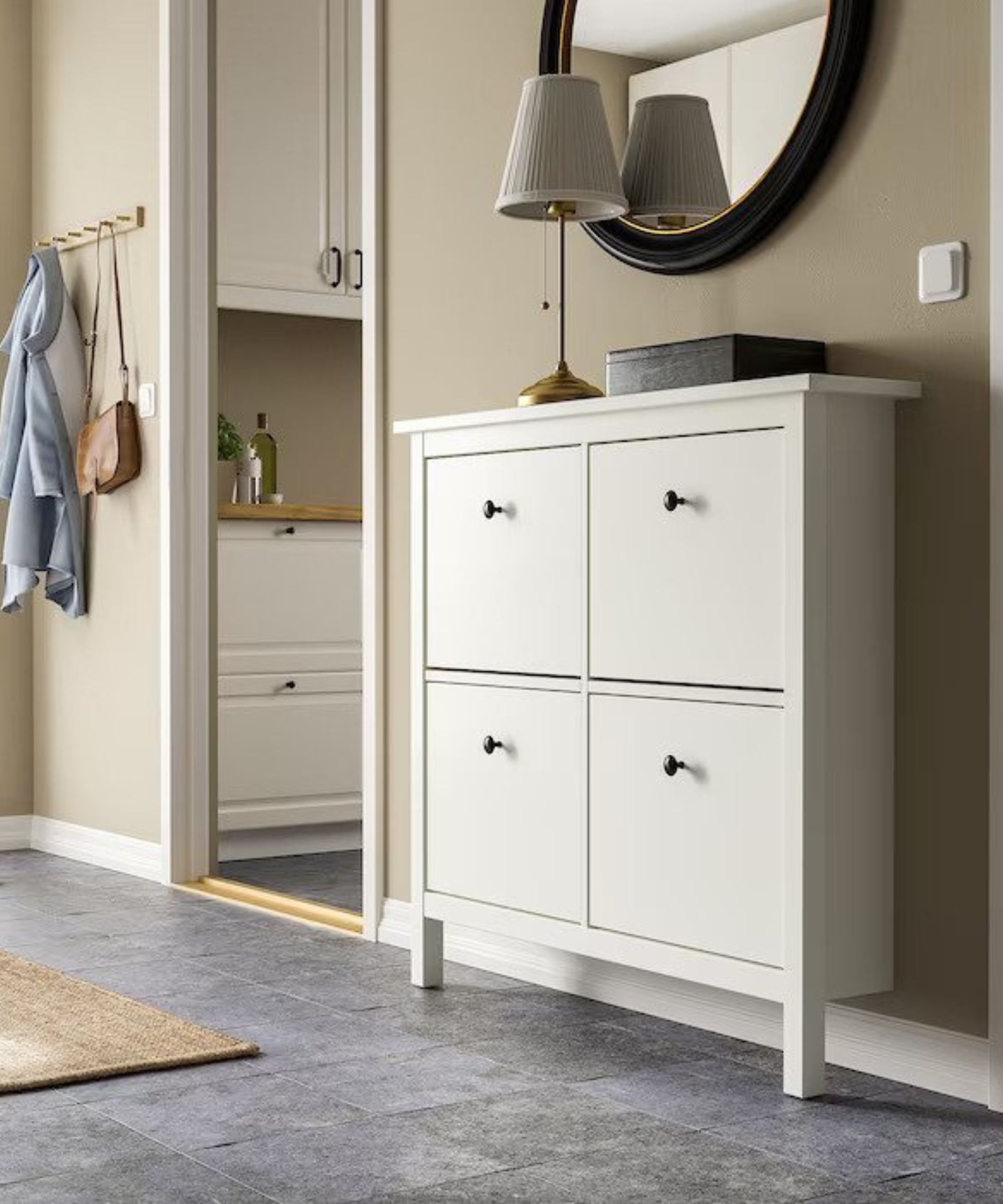
Shoes and bags are among the main things making your entryway look cluttered.
The trick is to edit your collections down to the pieces you value most, says Amélie Saint-Jacques, professional home organizer and owner of Amélie Organizes.
She explains, 'I help my clients let go of the things that no longer serve them, meaning the things that they no longer love or use. This results in a home where items are loved and used, and therefore are valued.
'We are much more likely to take good care of things we value and to appreciate them, so those things often last longer.'
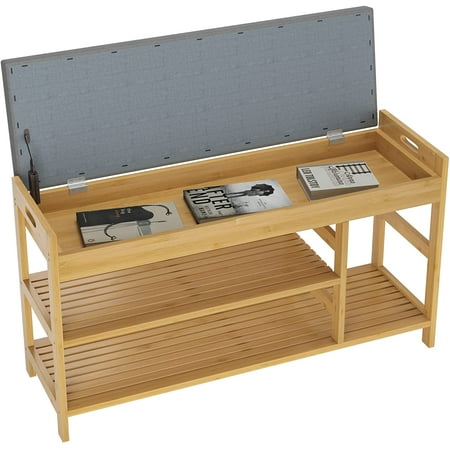
This shoe storage bench offers space to store shoes and sit down to put them on, with a small section for storing other outdoor essentials beneath the seat.
27. Items not related to leaving the house
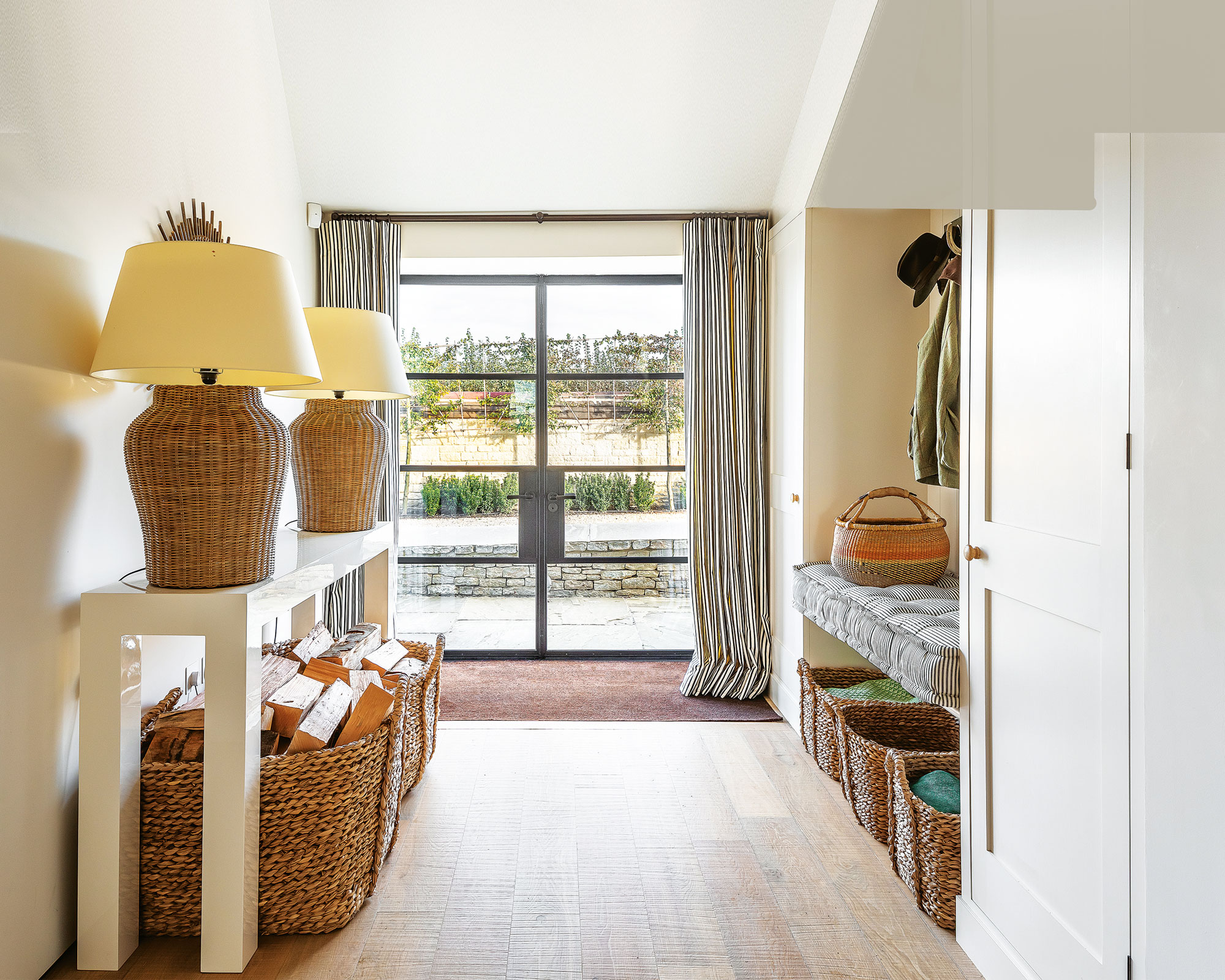
When organizing an entryway, think reasonably about which items help you leave the house and which ones get in the way.
Stashing your umbrellas with your hats and scarves is reasonable, but keeping your summer swim beach bag in there all the time can contribute to clutter.
Likewise, it can be handy to keep your grocery bags by the door for easy access but don't leave your sports equipment there unless you take it out with you every day. It will only serve to get in the way of you and your guests.
Home offices
28. Digital clutter
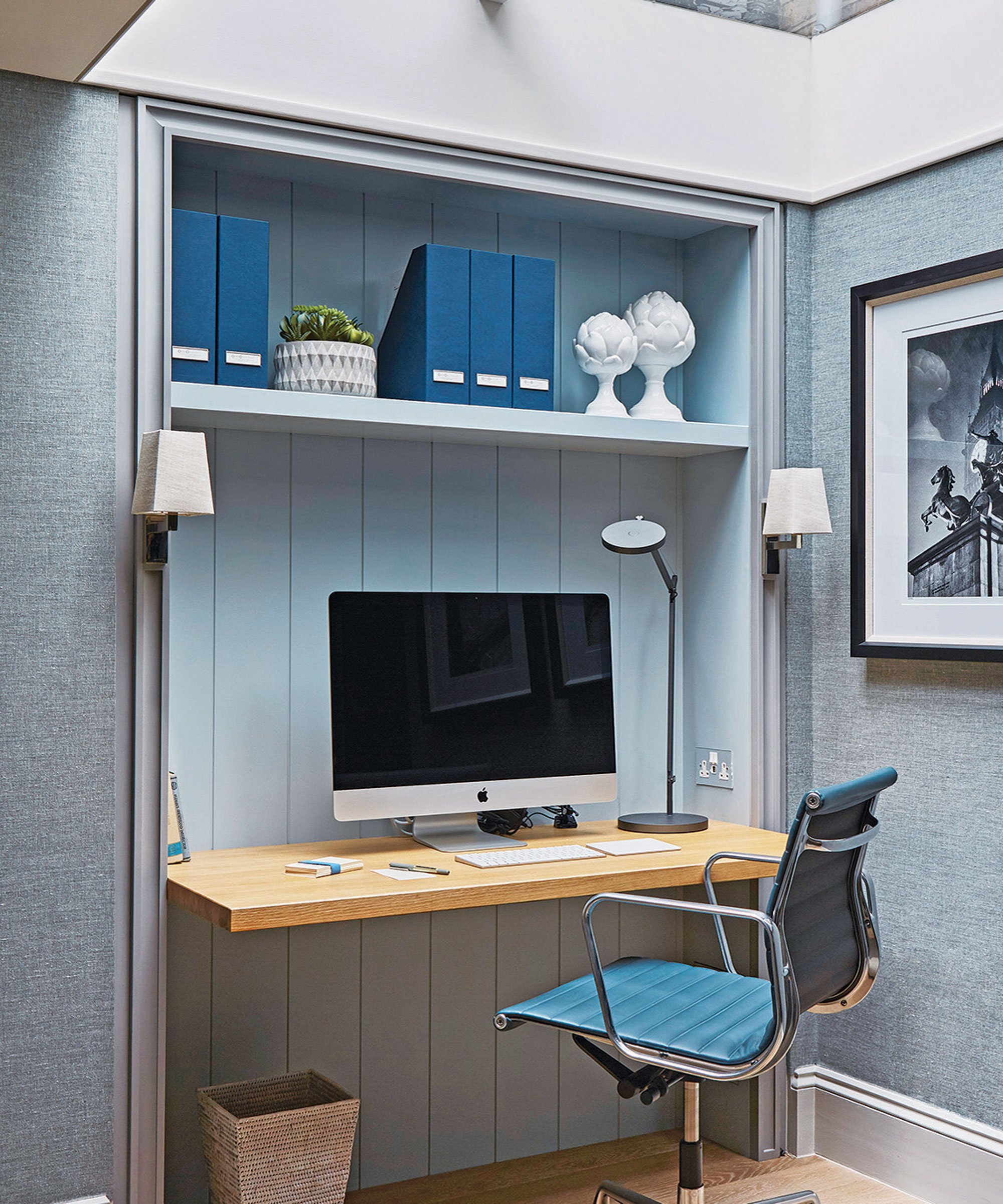
Your desk might be clear, but if your digital desktop isn’t, stress levels will remain high.
Remove as much as you can so it’s as clear as possible, then create named folders for what’s left, just like you would if you were organizing a home office.
29. Outdated tech
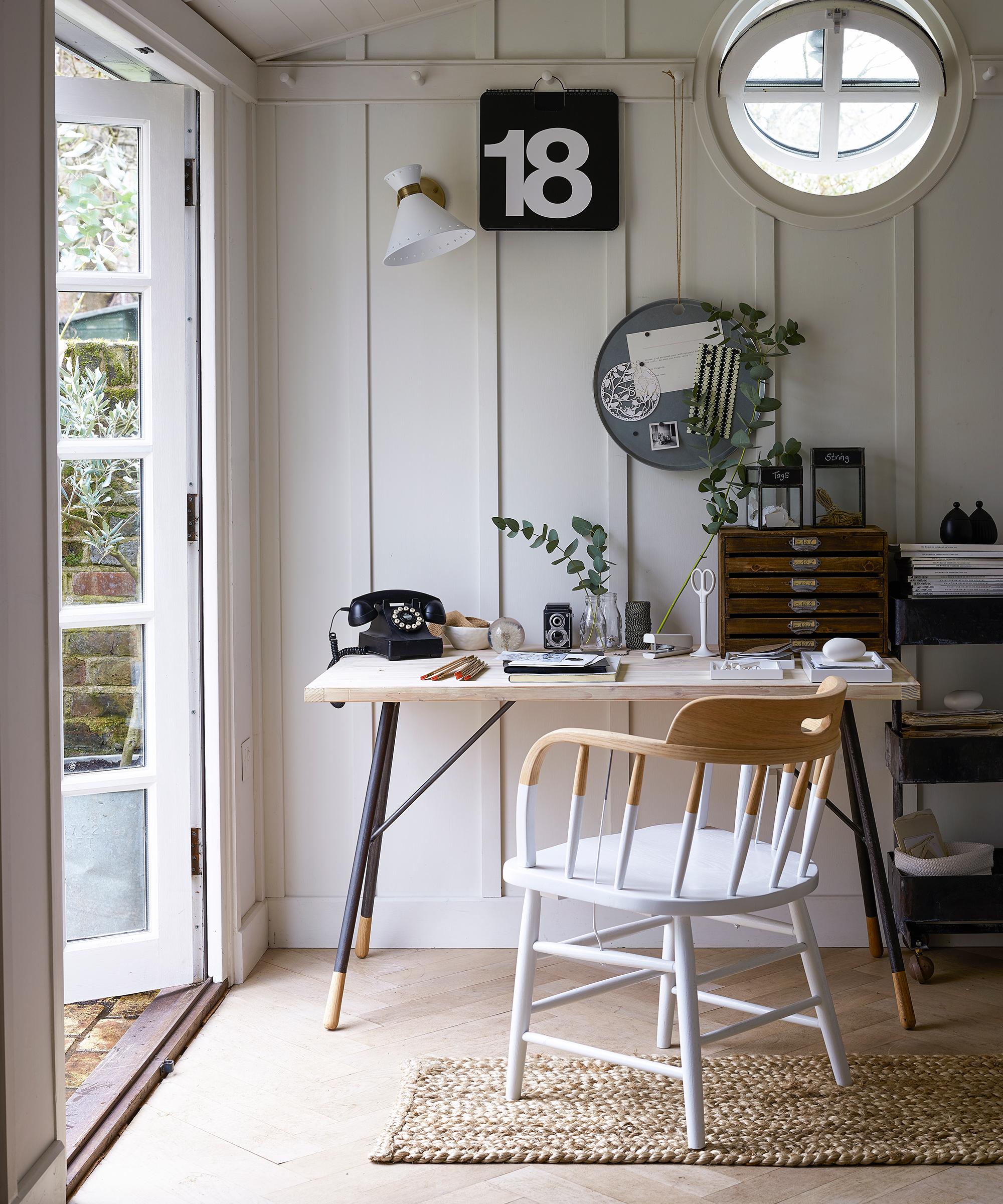
Whether it’s the remote control to a TV you no longer own, an ancient cell phone, or broken speakers, there are some things you’re just never going to need again, so ditch them, pronto.
However, when organizing cords and cables, perhaps take a more reserved approach. If you're not sure what they’re for, stash them in a box for a year or so; if you haven’t used them in that time, you’re safe to get rid.
30. Paper clutter
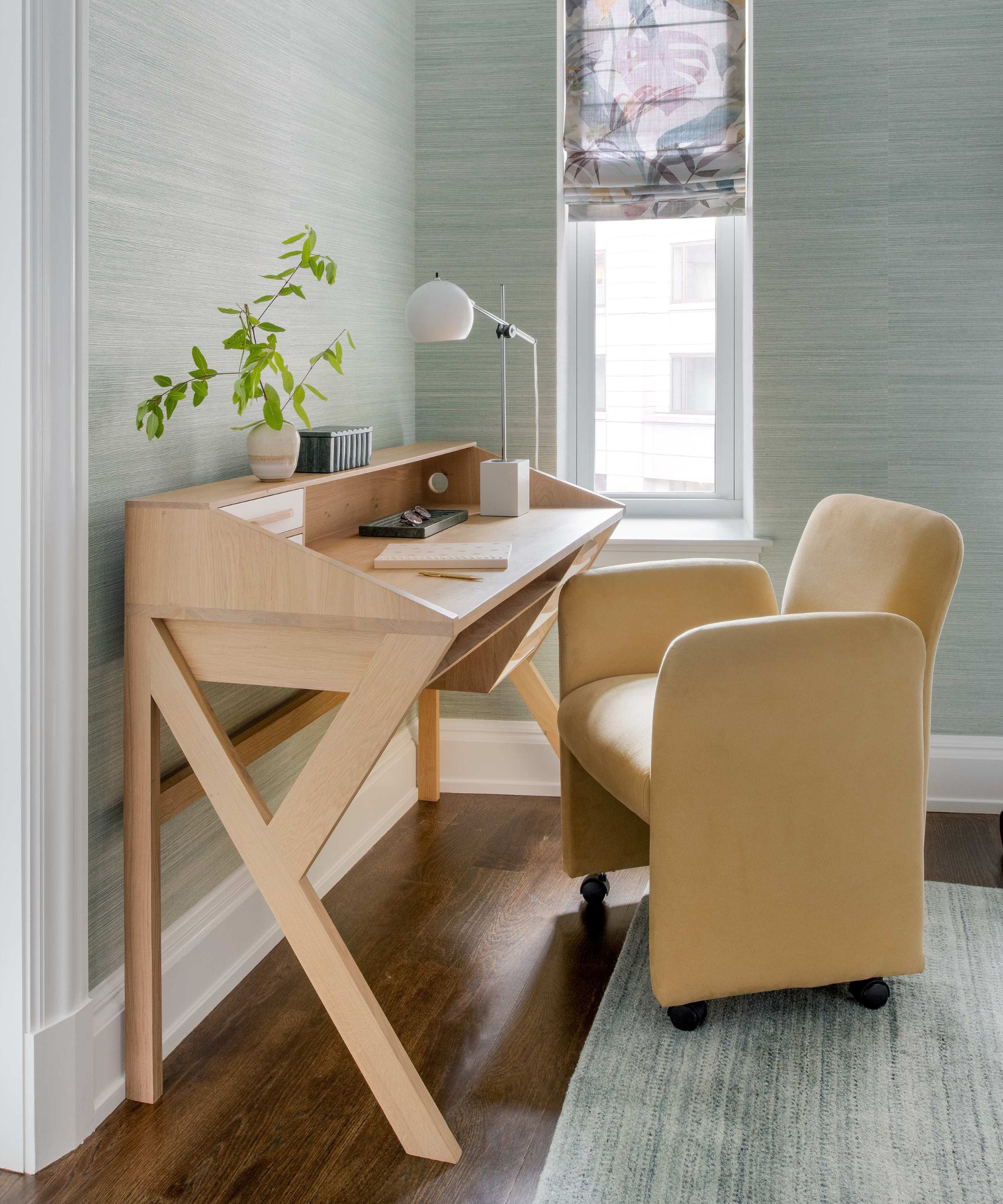
Going paperless is one of the best things you can do to maintain a clutter-free home, not to mention it’s great for the planet.
Take the time to gather all your paperwork together and work your way through piece by piece. Get rid of paper clutter you no longer need (be sure to double check you don’t need to retain hard copies before you shred anything) and scan the ones you do, then ‘opt-in’ for digital versions going forward.
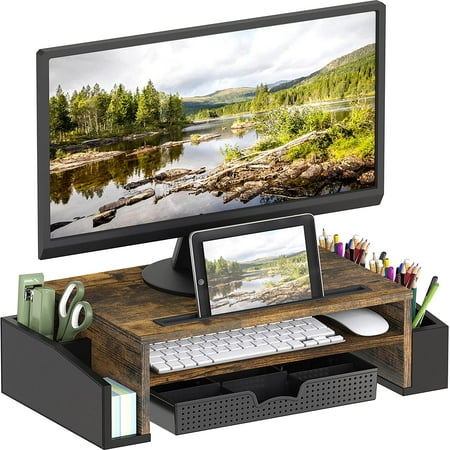
This monitor riser comes with adjustable storage trays beneath and underneath to help you keep all your work essentials close to hand, but out of the way. Making your desk look intentional, rather than cluttered.
31. Junk drawer
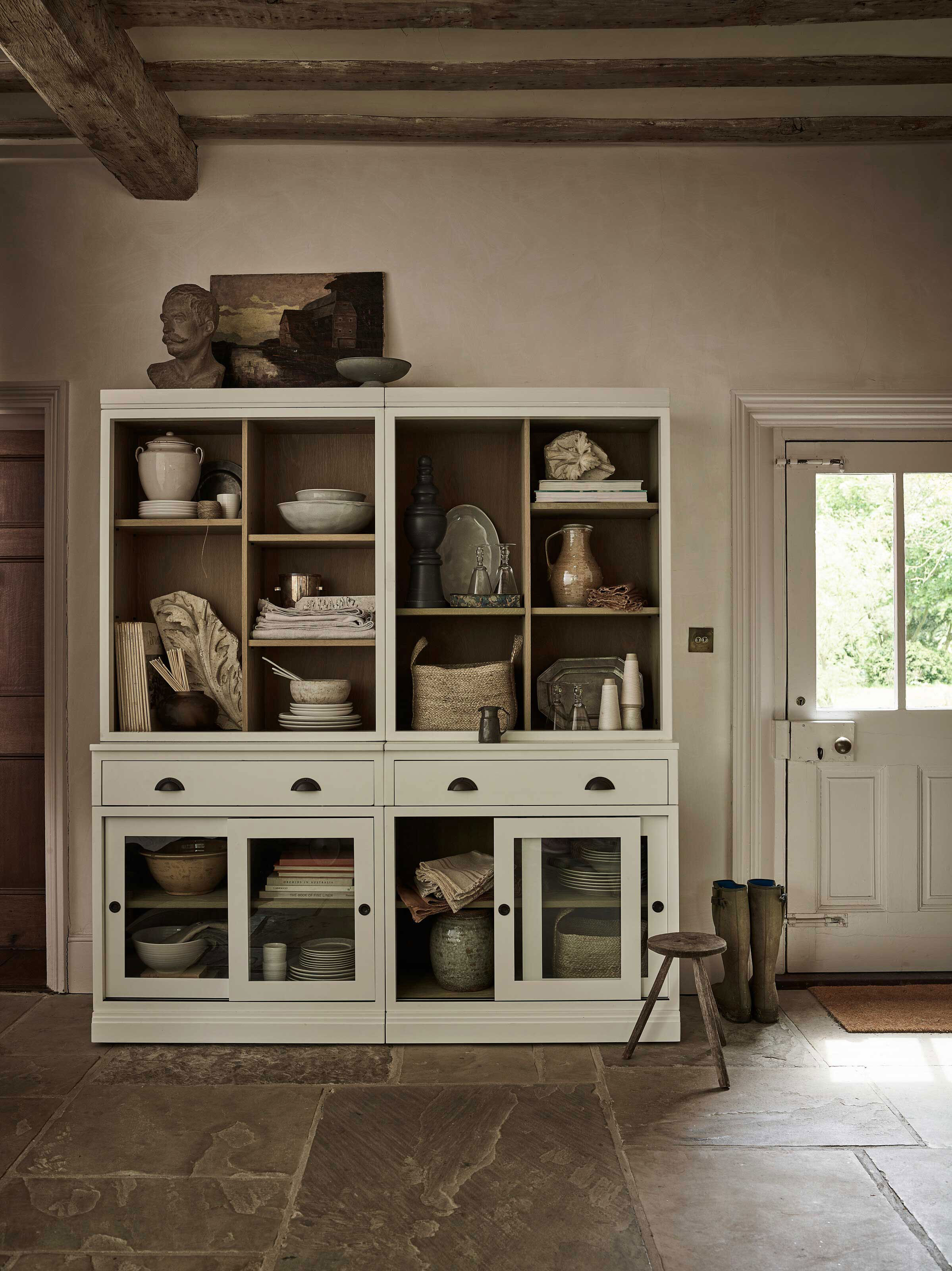
Designating a ‘junk’ drawer is just an excuse to hold onto clutter – it’s still clutter, regardless of where it is!
Before conquering the dreaded junk drawer, allow yourself a few items with purpose: an emergency contact list, spare keys, a (working) pen, and spare change, for example.
Anything else that doesn’t have a ‘natural’ home elsewhere are things to get rid of in your junk drawer.
32. Gift wrap and greetings cards
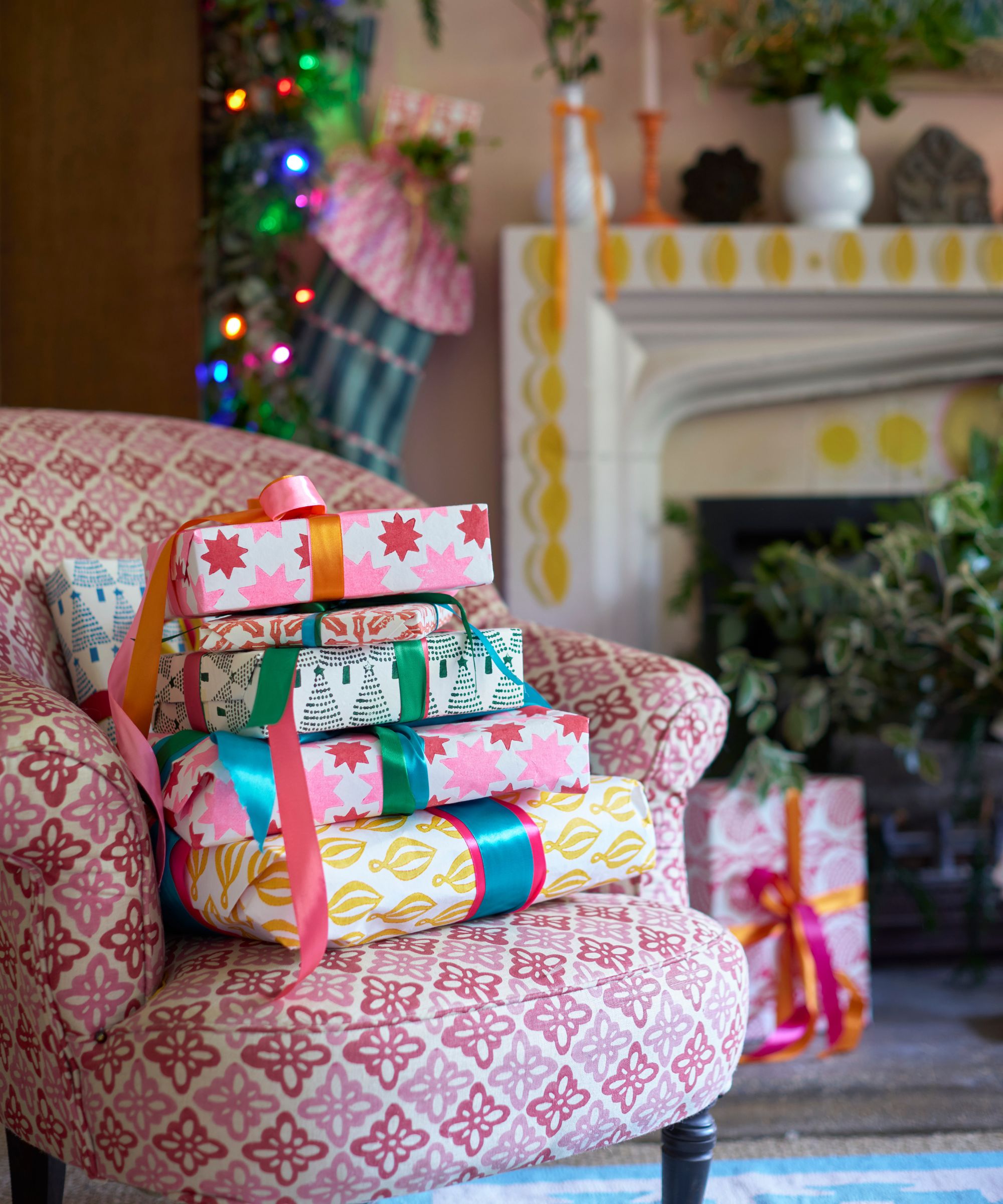
While it’s ok to hold onto a few, most cards and gift wraps lose their significance pretty quickly after the event.
Kate Ibbotson, APDO member and founder of A Tidy Mind says, ‘Unless there’s anything about a card that makes it so special it needs to go into a memory box, let it go – it has done its job, which was to convey a meaningful message.'
33. Craft supplies

Unless you’re a regular crafter, you’re likely to have dried-up glue sticks, ribbon off-cuts, paper strips, and other miscellaneous items left over from various projects that you’ll probably never need again.
Streamline your stash before organizing art supplies, and donate anything usable to your local school, church, or any non-profit organization that could make use of it.
34. Manuals
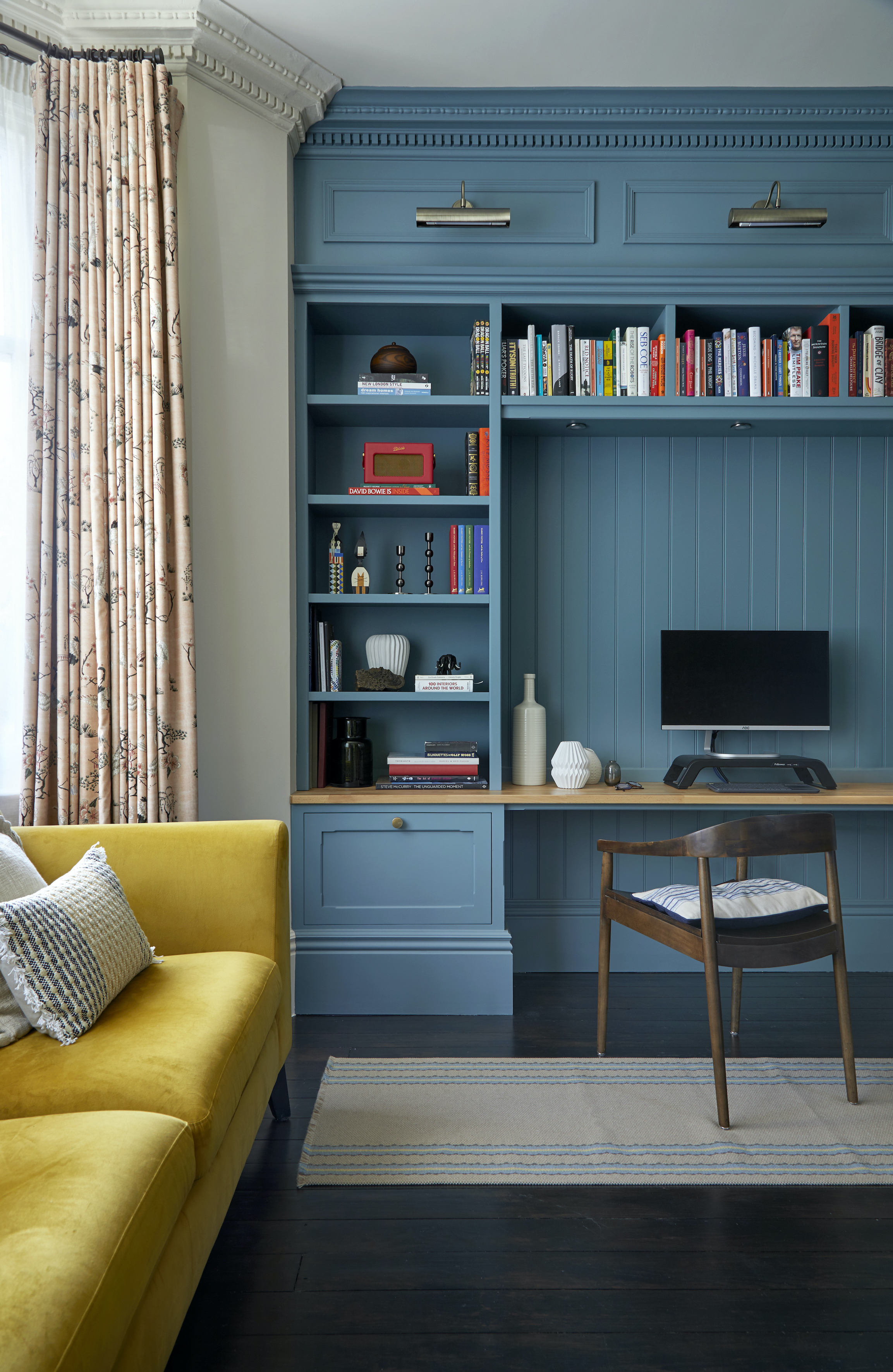
When it comes to instructions, guides, and manuals, bear in mind that most can now be found online, so get rid of paper versions where you can. This is what the pros recommend if you’re decluttering to move – chances are you’ll have all-new appliances, anyway.
FAQs
How can I be more ruthless when decluttering?
Indecision is usually what holds us back from effective decluttering. What if I need it again? What if I miss it? I might wear it again one day… Having these thoughts whizzing around your head can make letting go of things very difficult, not to mention time-consuming.
The trick to becoming more ruthless is to take the decision out of the decision-making process. Set yourself some rules in advance; is it broken? Does it still fit? Will you use it again? If the answer is no, get rid – no exceptions. Employing the 20/20 decluttering rule can also be highly effective, and setting a timer usually helps, too.
Stick with it, and you’ll see just how much decluttering can change your life for the better.
Sign up to the Homes & Gardens newsletter
Design expertise in your inbox – from inspiring decorating ideas and beautiful celebrity homes to practical gardening advice and shopping round-ups.

Chiana has been at Homes & Gardens for two years and is our resident 'queen' of non-toxic living. She spends most of her time producing content for the Solved section of the website, helping readers get the most out of their homes through clever decluttering, cleaning, and tidying tips. She was named one of Fixr's top home improvement journalists in 2024.
- Tara KingContributing Editor
You must confirm your public display name before commenting
Please logout and then login again, you will then be prompted to enter your display name.
-
 Designers share how to make your outdoor living room look more expensive – and the affordable products to get you there
Designers share how to make your outdoor living room look more expensive – and the affordable products to get you thereFrom layered lighting to luxe-looking textiles, these simple swaps made all the difference
By Charlotte Olby Published
-
 5 surprising but brilliant ways to clean with old socks – from perfectly buffing stainless steel to deterring pests naturally and more
5 surprising but brilliant ways to clean with old socks – from perfectly buffing stainless steel to deterring pests naturally and moreTackle dust in tricky corners, clean your mirrors and even banish bad odors with those rogue single socks
By Andy van Terheyden Published
-
 How the 'ODT' method can help you to tackle your overwhelming decluttering checklist – and streamline the process from start to finish
How the 'ODT' method can help you to tackle your overwhelming decluttering checklist – and streamline the process from start to finishAvoid 'analysis paralysis' and tick off tasks quickly and easily by making just one decision at a time
By Ottilie Blackhall Published
-
 I gave the ‘try-for-five’ method a go in my small home – it's a brilliantly easy way to beat chore procrastination in seconds
I gave the ‘try-for-five’ method a go in my small home – it's a brilliantly easy way to beat chore procrastination in secondsThis method is great for those with executive dysfunction
By Chiana Dickson Published
-
 'It's a fast reset button' – using the 1, 2 ,3 ,4, 5 decluttering method cleared my persistent mess in seconds
'It's a fast reset button' – using the 1, 2 ,3 ,4, 5 decluttering method cleared my persistent mess in secondsIt's easy, effective and so quick to do
By Ottilie Blackhall Published
-
 This simple closet swap doubled my cramped hanging space – professional organizers swear by it too
This simple closet swap doubled my cramped hanging space – professional organizers swear by it tooVelvet hangers have transformed my closet
By Eve Smallman Published
-
 I tried the 'GFD' basket tidying trick ahead of hosting – it was a last-minute clutter-busting savior
I tried the 'GFD' basket tidying trick ahead of hosting – it was a last-minute clutter-busting saviorThis quick clean-up fall-back saved my game night
By Chiana Dickson Published
-
 I tried the 'Reverse Decluttering' method – it made clearing clutter in my small home stress-free, speedy and guilt-free
I tried the 'Reverse Decluttering' method – it made clearing clutter in my small home stress-free, speedy and guilt-freeIt's a simpler way to cut clutter
By Chiana Dickson Published
-
 'They all feel chaotic’ – 6 things that make a room look really messy and what to do for an instant lift
'They all feel chaotic’ – 6 things that make a room look really messy and what to do for an instant liftEasily make your home less stressful by fixing these common faux pas
By Chiana Dickson Published
-
 9 things you need to declutter in April 2025 – tossing these need-to-go items will maximize your space this spring
9 things you need to declutter in April 2025 – tossing these need-to-go items will maximize your space this springSay goodbye to winter clutter by clearing out lingering items
By Chiana Dickson Published